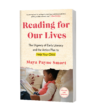As adults, many of us understand that gratitude is an important element of our mental and emotional well-being. Practicing gratitude and appreciation in our lives makes us happier as people. It reminds us to keep our eyes open to the wonders of the world and it helps us to be more resilient individuals. Expressing words of gratitude can improve our relationships with friends, family members, peers, and ourselves.
And the benefits of gratitude can be seen just as clearly in the lives of children. A 2019 entry in the Journal of Happiness Studies found a positive correlation between gratitude and happiness in kids as young as five years old. Many studies in the last few decades have also shown that continuing to cultivate and experience gratitude through the school years improves both kids’ and teens’ ability to empathize with others, as well as their overall sense of satisfaction.
People aren’t really born with a sense of gratitude, however. It’s something that is taught, through actions, through attention, and through words. There are several things that adults can do to encourage a thankful outlook in children. Just by expressing our own appreciation, for nature, for our friends and family, and even for our children themselves, we are strengthening our children’s ability to feel and show gratitude.
Doing these fun and simple crafts to create adorable paper-chain animals with your child is another way to help them develop this important attitude (and some literacy skills while we’re at it!)
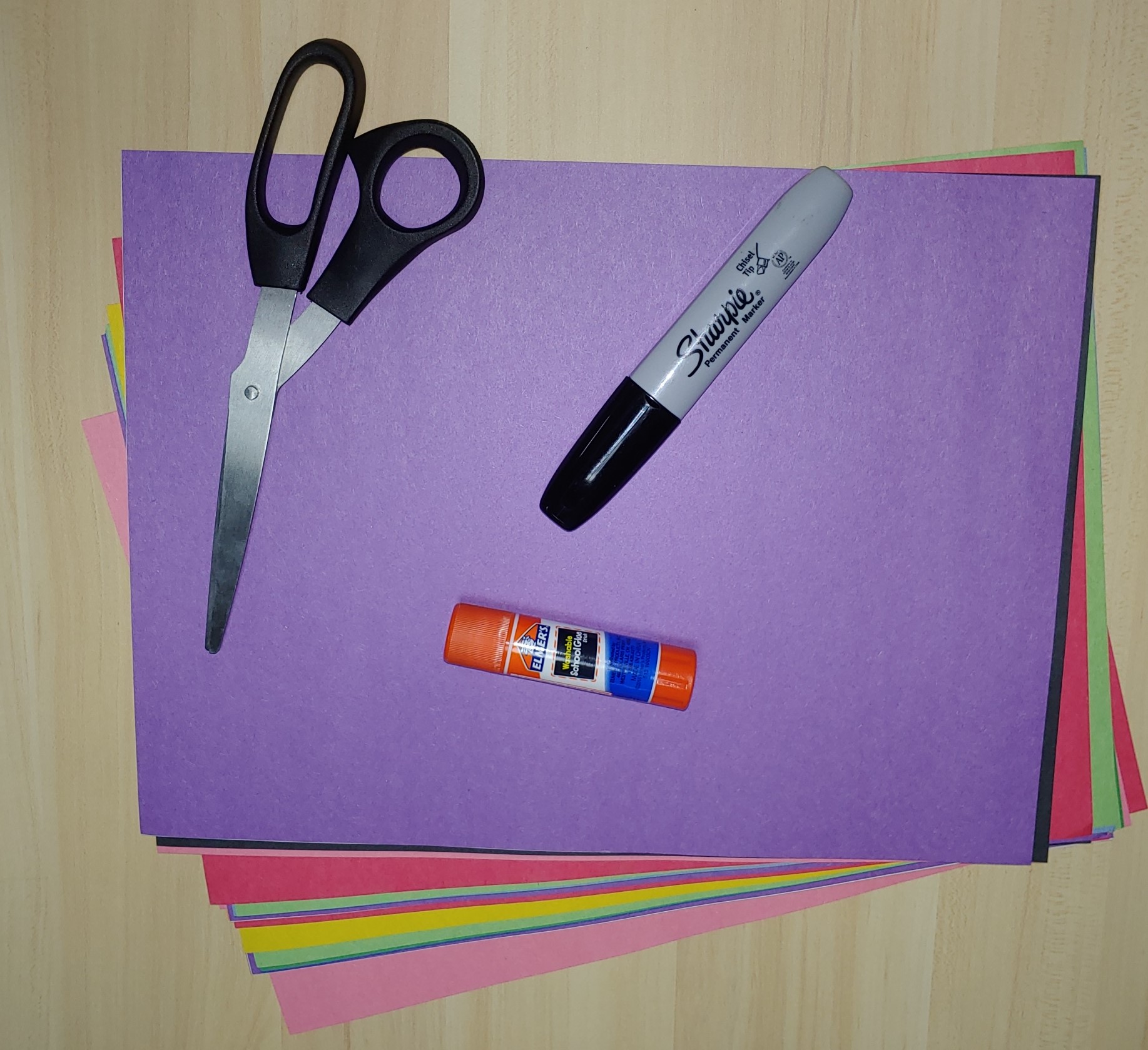
Materials:
- Construction Paper
- Glue
- Scissors
- Marker
Cost: $3-7 for construction paper and glue
Set the Scene (optional)
Kick off your crafting session by curling up with your child and a great book on the subject. Books like If Animals Gave Thanks by Ann Whitford Paul, Gracias/Thanks by Pat Mora, and We Are Grateful: Otsaliheliga by Traci Sorell will help your child better understand the concept of gratitude and thankfulness by presenting diverse lenses on the subject.
Then, while sitting and connecting the rings in these projects, you can further foster gratitude by discussing what you’re thankful for, as well as things that your child has done that made others appreciative. If you’re feeling ambitious, you can even help your child write down things they’re grateful for on the back of the strips of construction paper before rolling them into rings.
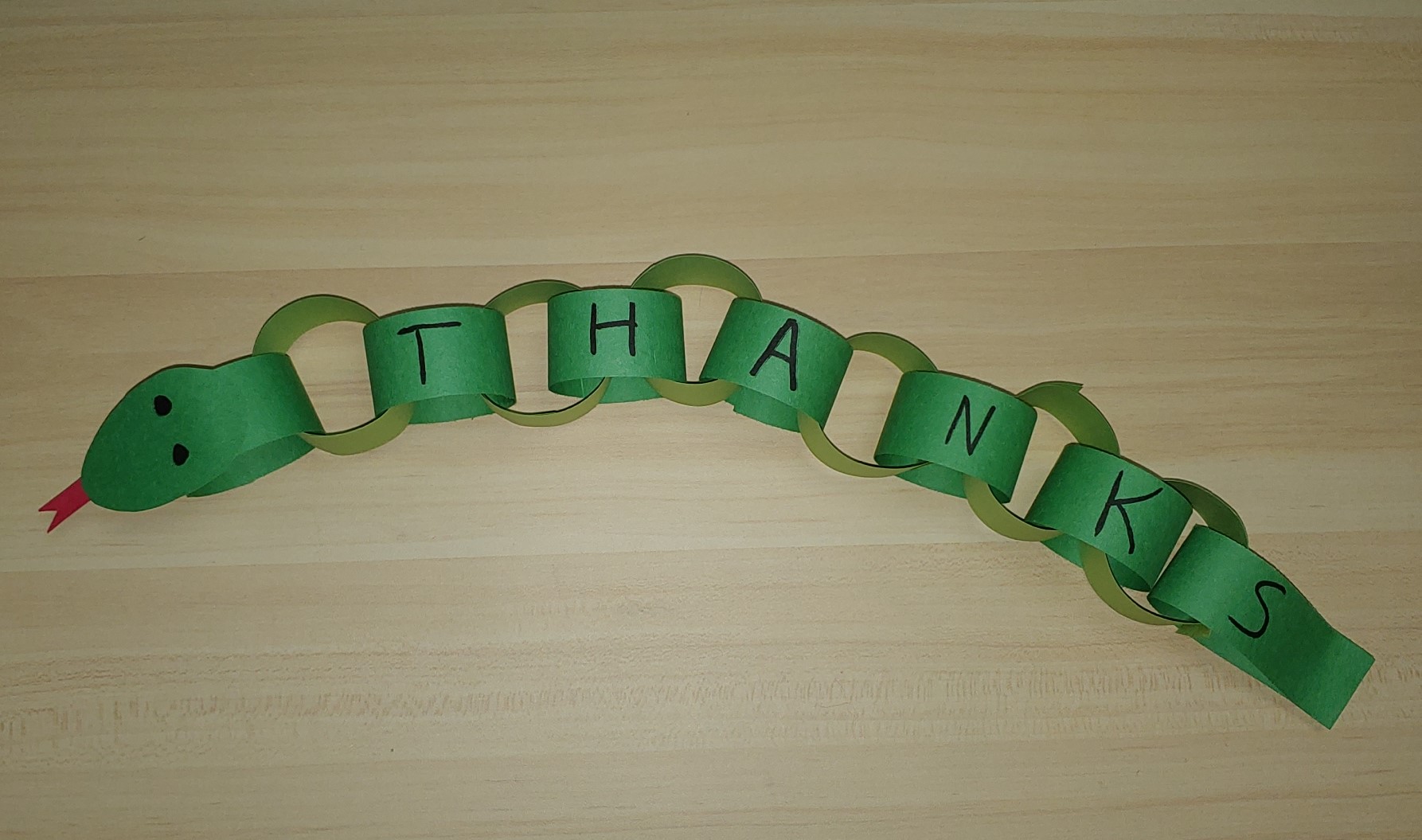
Gratitude Animal Project 1: Thanks Snake
This cute little guy is slithering over to show his appreciation. Once created, the Thanks Snake can either serve as a fun toy or decoration, or it can be used as a unique gift in place of a traditional thank-you card.
Step 1: Use two sheets of construction paper of a color (or colors) you choose. Cut each piece of construction paper into eight strips lengthwise, then cut the strips in half. This will create 16 strips of one-inch by five-inch paper for each sheet of paper. Cut out one oval shape for the head and a small red strip for a tongue.
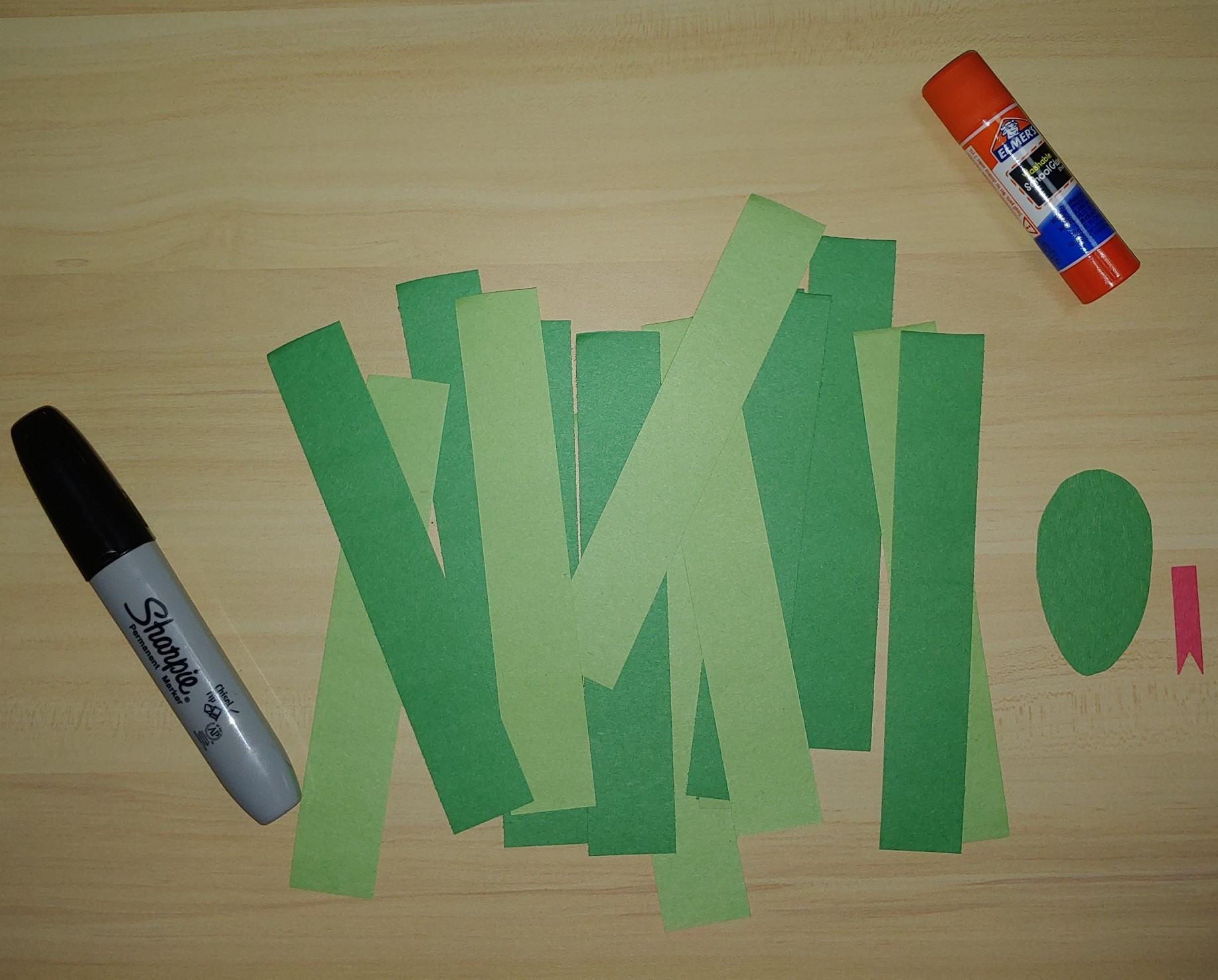
Step 2: Take six of the construction paper strips. Write one letter of the word thanks on each. Center the letters T, H, A, N, and K, but position the letter S slightly to the side.
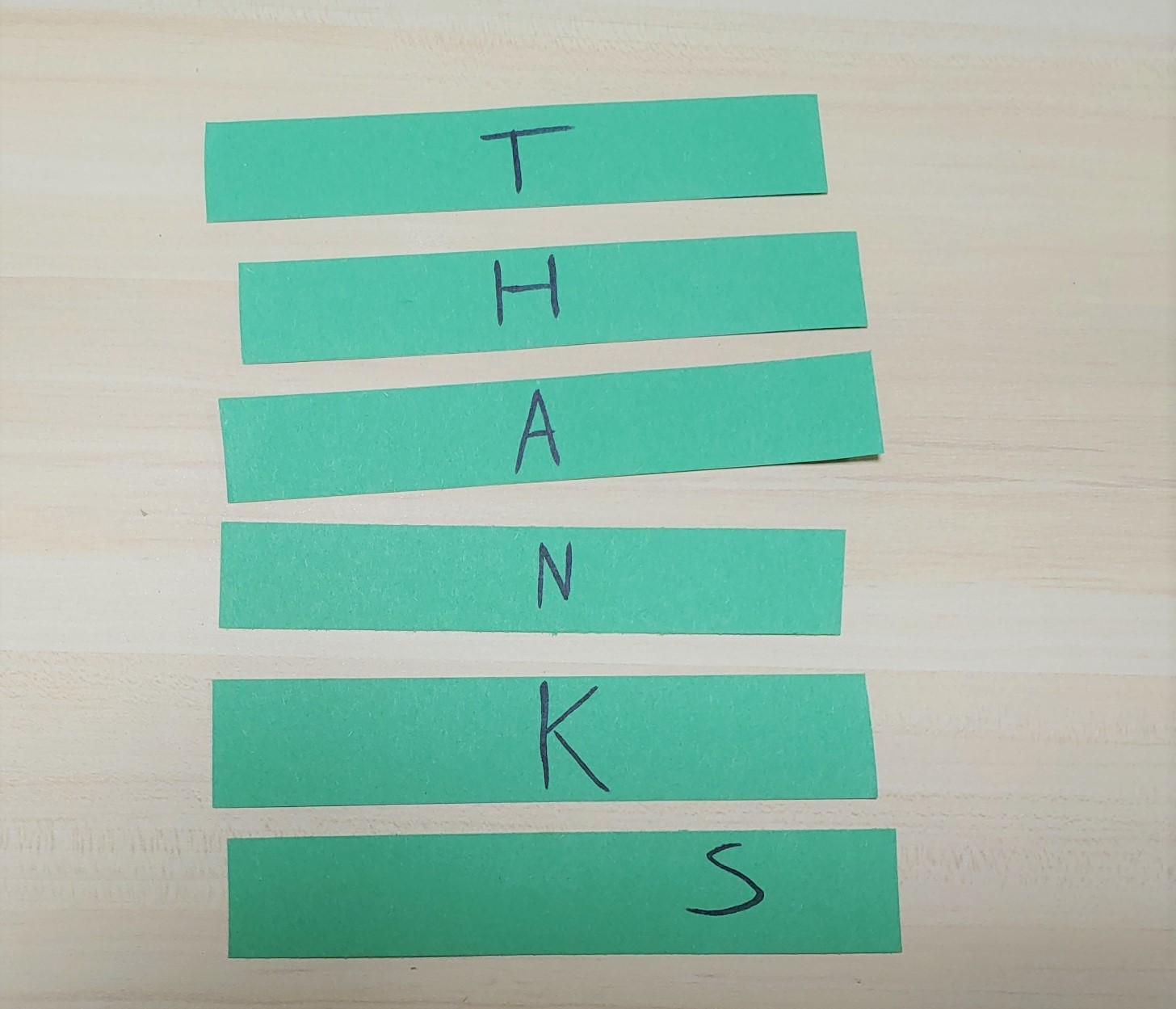
Step 3: Set the strip with the letter S to the side. (You’ll add it in the next step.)
Glue or tape one end of a blank strip over the other to create a ring. Slide another blank strip of paper through the first ring, then glue or tape it together to form a second ring. Use the strip with the letter T on it for the third ring.
Next, alternate one blank strip and one lettered until you have 12 rings of paper strung together, spelling “THANK.”
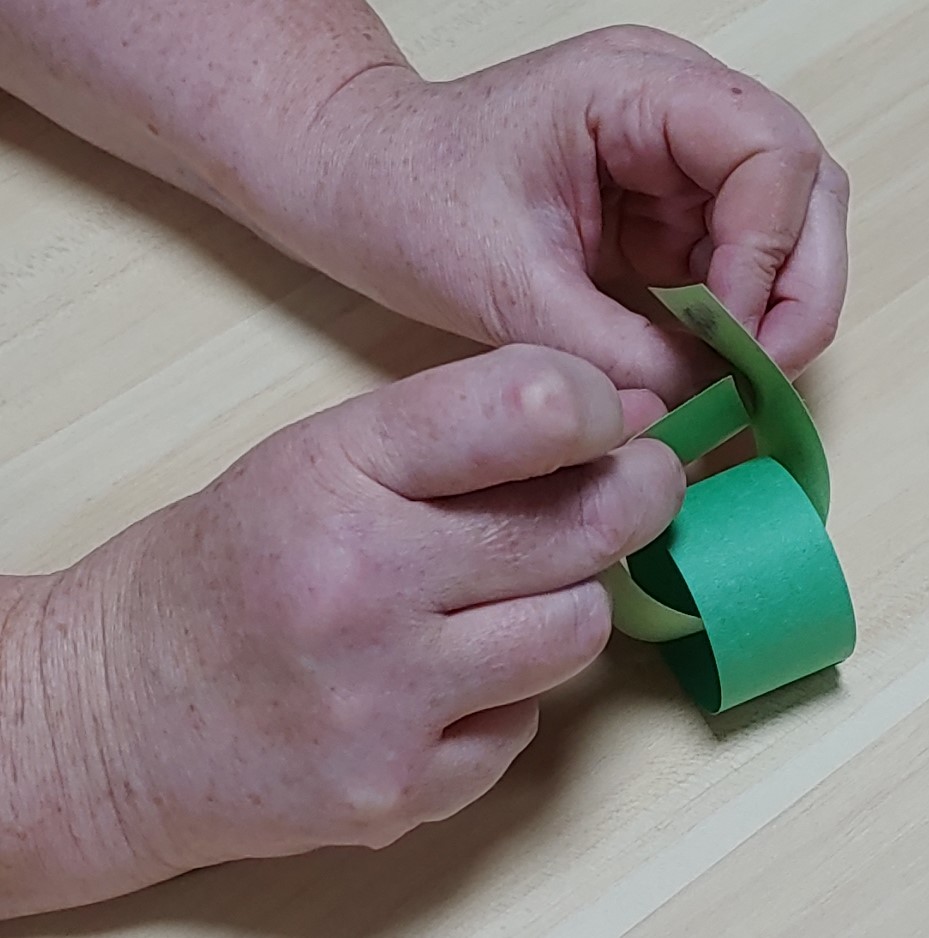
Step 4: Slide the S strip through the last ring. Glue the ends of the paper together to create a raindrop shape for the tail, as shown in the picture below. Make sure the S is on the top. Draw two eyes on the oval for eyes and glue the tongue on, then glue the head to the top of the first ring.

Gratitude Animal Project 2: Grateful Octopus
The Grateful Octopus makes a great wall decoration in your little one’s room or playroom. Use your favorite wall-safe adhesive or mounting putty both to hold it to the wall and to position the arms.
Step 1: You’ll need five pieces of paper for this animal. Use blue as shown, or your child’s favorite color! Again, cut each piece of construction paper into eight strips lengthwise, then cut the strips in half, creating 16 strips from each sheet. You will need 64 strips total. Cut a large dome shape for the head of the octopus, two white ovals for the eyes, and two smaller circles for pupils.
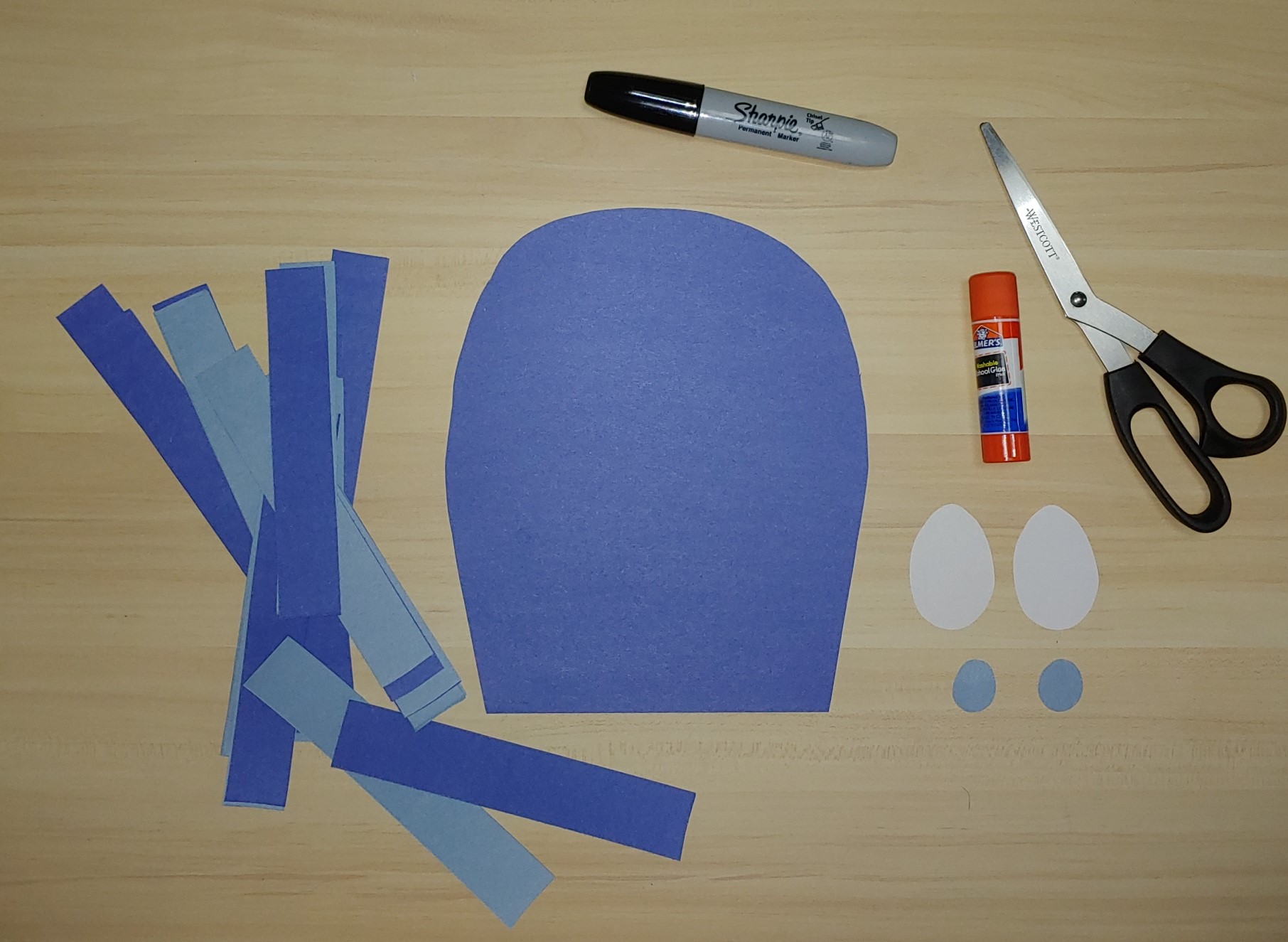
Step 2: Take eight of the construction paper strips and in the center of each one vertically write one letter of the word grateful. I chose to alternate colors, but that’s up to you.
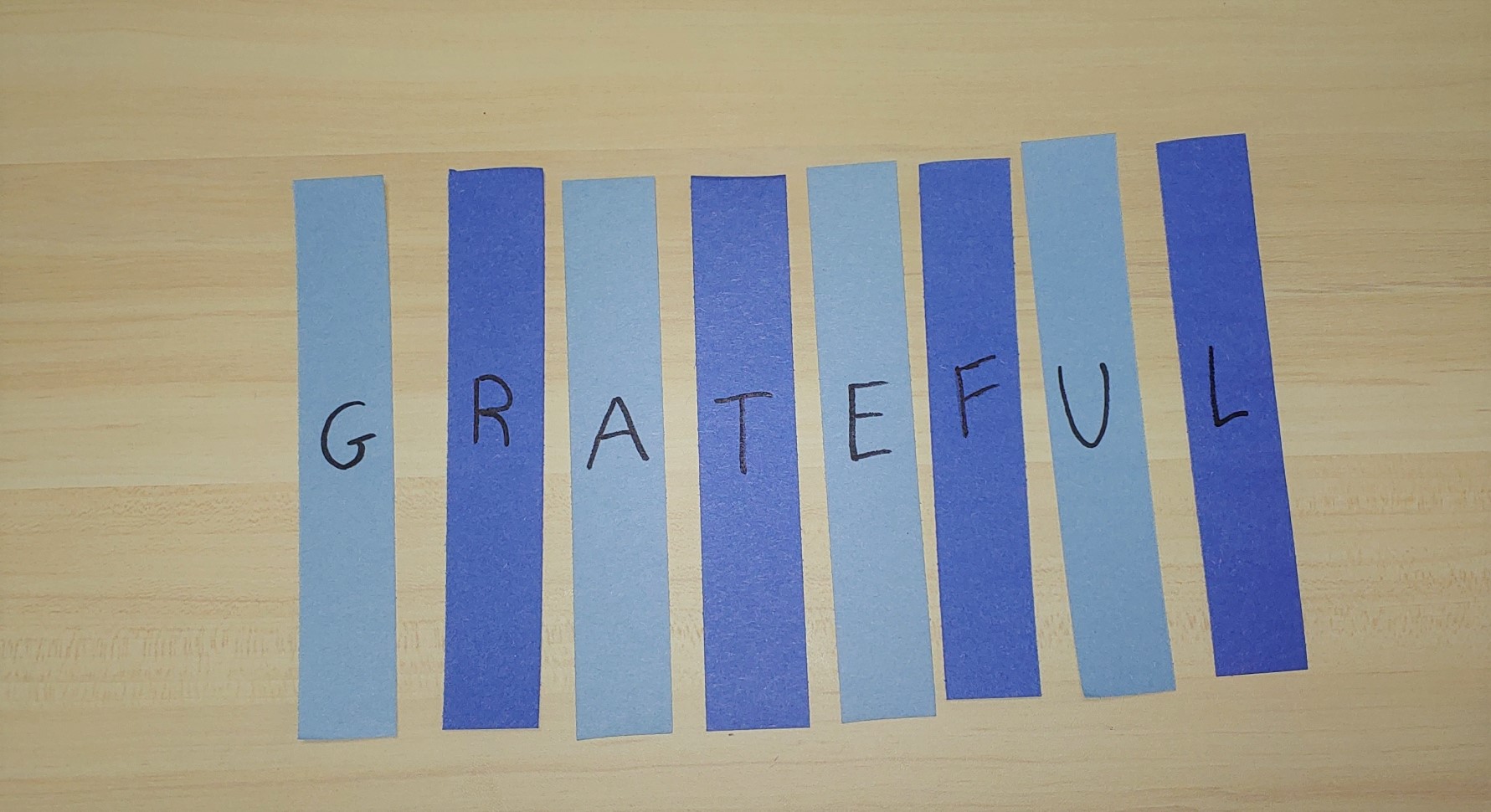
Step 3: Glue or tape one end of the first lettered strip over the other to create a ring. Slide a blank strip of paper through the first ring, then glue or tape it together to form a second ring. Continue until there are eight rings. Repeat this procedure for each letter.
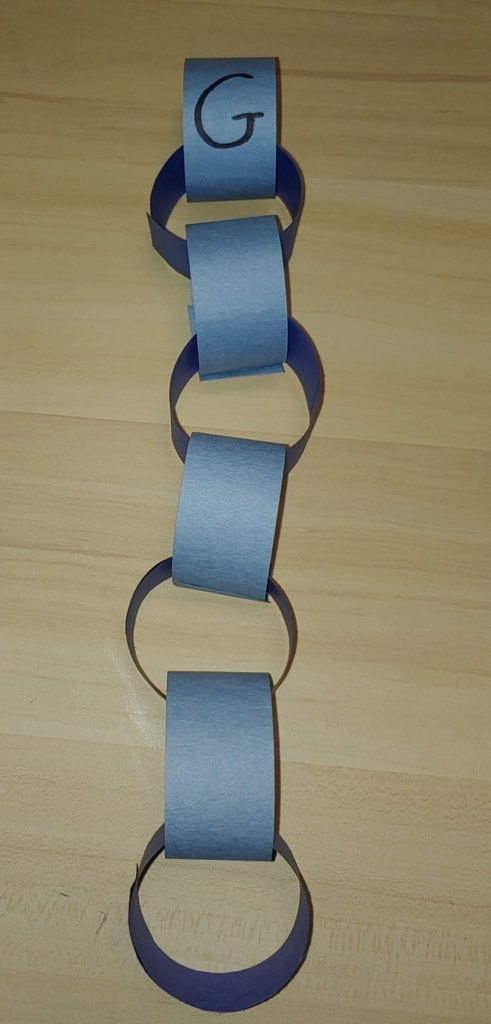
Step 4: Glue each paper chain to the bottom of the dome shape to spell out grateful. Glue on the white eyes, then the colored pupils.
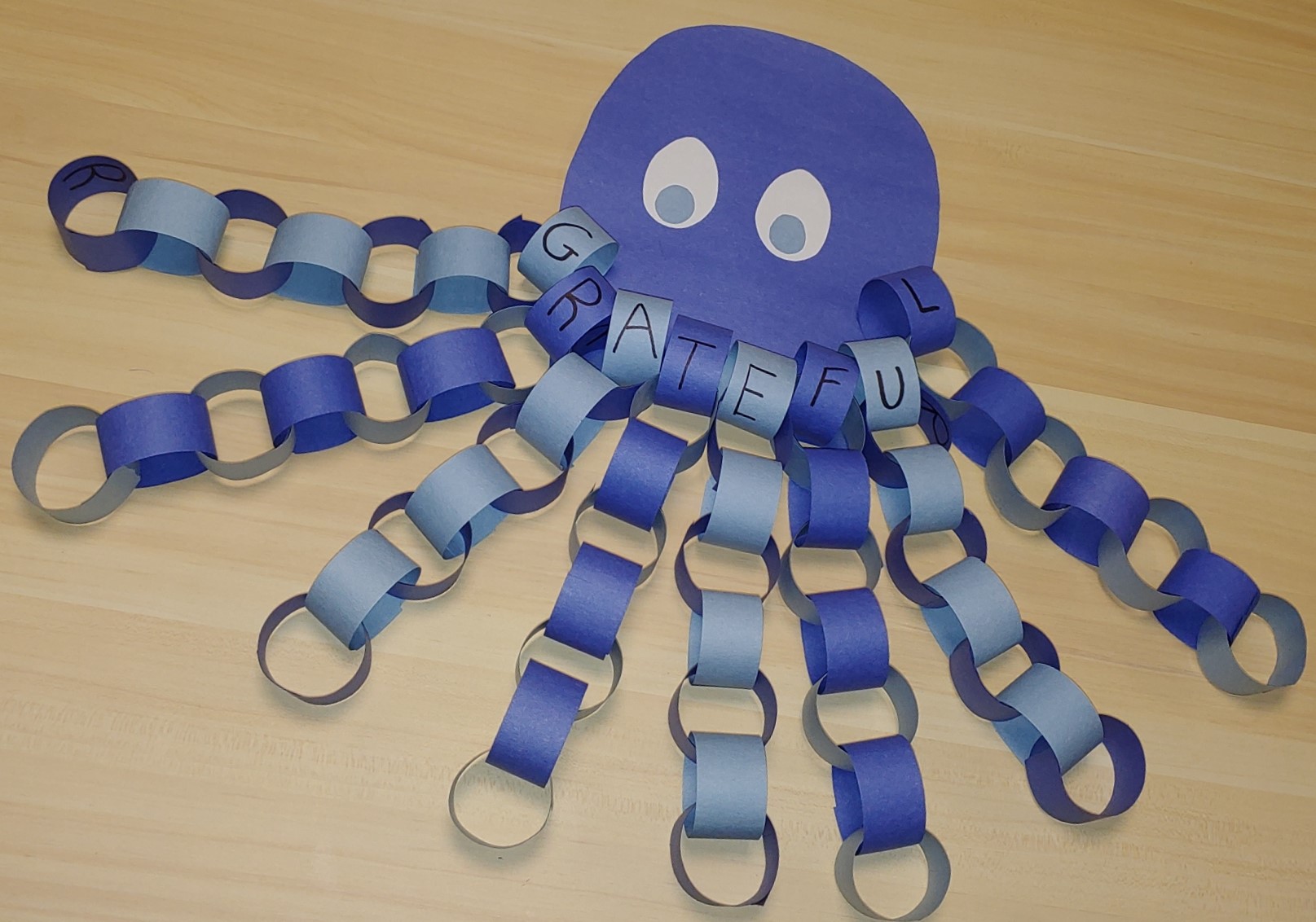
Gratitude Animal Project 3: Thanksgiving Turkey
Paper rings can also be used to make an ordinary Thanksgiving craft extraordinary.
Step 1: Create your favorite construction paper turkey, such as the one below.
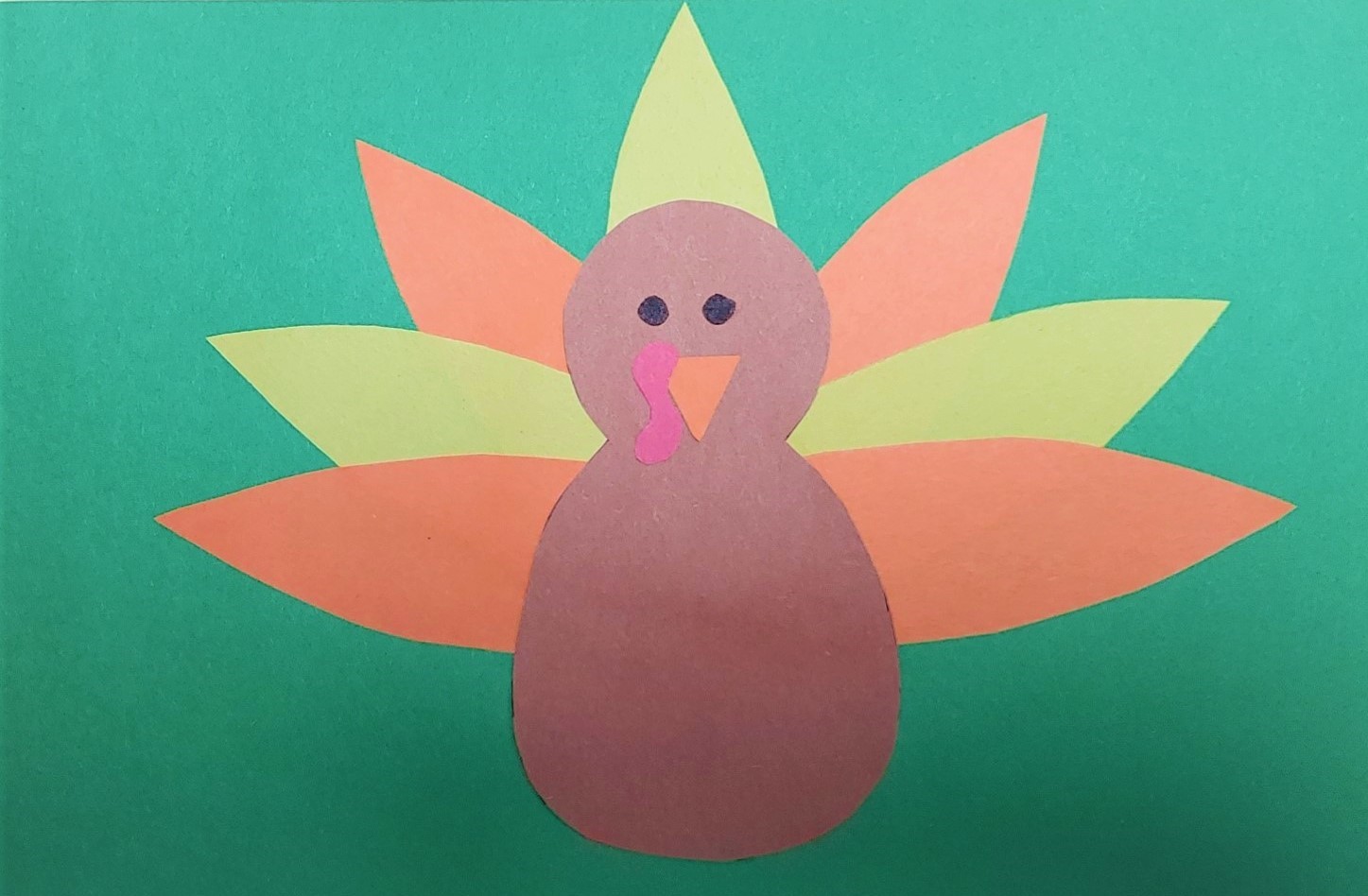
Step 2: Let each participant write something they are grateful for on one strip of construction paper.
Step 3: Glue the strips of paper into rings, then glue the paper rings to the feathers of the turkey with the words facing outwards. Younger children can draw a picture of something they’re grateful for.
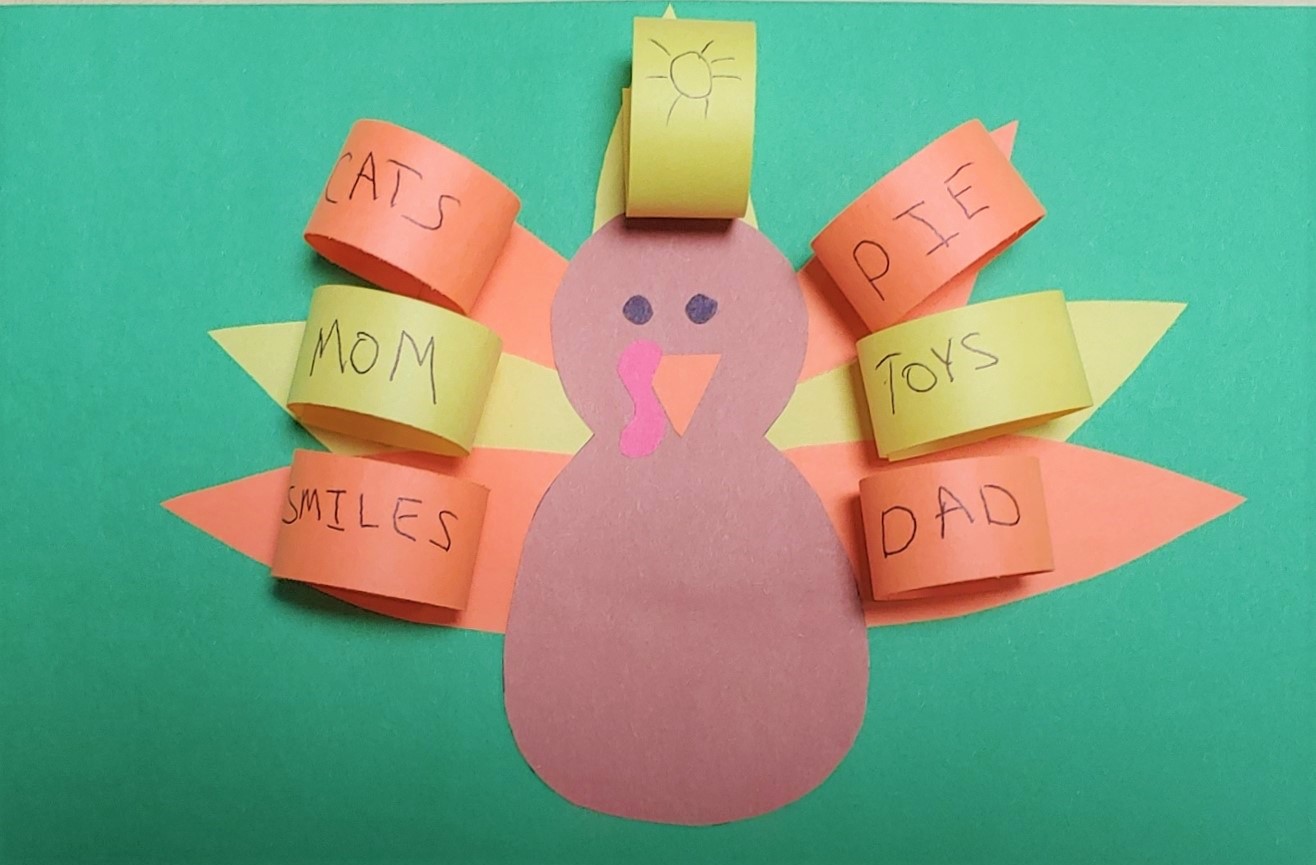
Gratitude promotes optimism, improves resilience, and makes children happier starting as young as five years old. Teens who frequently experience gratitude are more hopeful about their lives, more satisfied with their lives, and less likely to develop depression. Like reading, teaching children about thankfulness and appreciation are lessons that benefit kids for a lifetime.
By Amy Williams
You can’t get started too early preparing children for school. But if you think that means strapping them into high chairs and busting out the blackboard, forget it! Getting kids ready for kindergarten—at least academically speaking—mostly means engaging with them and making sure you expose them to lots of letters and words, books and ideas. (Numbers too, but in this post we’ll be focusing on pre-reading skills.)
There are simple things you can do at home to make sure your child has a solid foundation to build on once they get to kindergarten. And the really good news is that there are loads of fun, easy, and free ways to get them kindergarten-ready using just their imagination and stuff you already have around the house. Below we share four simple and free strategies to get kids ready for school. But first, a note for those of you whose children are on the brink of kindergarten already …
Is it too late?
If your child is about to start kindergarten and you realize you haven’t intentionally prepared them for school, don’t panic! Many of the practical and social skills they will need for school, such as opening snacks on their own and playing well with other kids, they’ve likely picked up through daily life. Those they haven’t, they’ll get an opportunity to learn fast in the group setting.
It’s also important to know that every child is unique; just because they don’t have every single skill on a checklist down pat doesn’t mean they’re not ready for school. Meanwhile, start working on the strategies below. Finding fun ways to support your child’s reading and writing skills at home will be invaluable for years to come!
Kindergarten-Readiness Tip #1: Have Fun with Letters
Mastering the alphabet is likely among the first skills you’ve helped your child with, and it’s one of the most important! In addition to memorizing the ABCs, they’ll need to learn to recognize and write both uppercase and lowercase letters, as well as to begin knowing the sounds they make.
The Wisconsin early literacy standards, for example, specify that kids should initially learn to recognize the difference between letters and other symbols, and then move towards connecting letters with the sounds they make. Recognizing letters and their sounds in familiar words, especially in a child’s own name, is a key intermediate step and a good place to start.
“Alphabet letters in isolation do not have meaning to the child. When the child is shown that letters grouped together represent his/her name or objects they know, the alphabet takes on new meaning,” the standards note. The advice? “Start with familiar words, talking about the letter names and sounds.”
Alphabet tracing workbooks abound in shops and online, but there are also lots of fun ways to teach letters to your child using what you already have at home. For example, think of an animal or object together that starts with each letter of the alphabet. Then, have your child write the letter out and draw a picture of each animal or object. Or conduct an ABC scavenger hunt, where your child has to find objects that start with the letter in question.
Other ideas include making an easy alphabet card game (all you need is index cards or bits of paper!), crafting sand letters, and printing out our free alphabet bingo card. Kids also love active play, so try alphabet hopscotch and ABC soccer to practice while getting moving. And don’t forget the books: We’ve put together a list of nine great alphabet books to read with your little one.
Kindergarten-Readiness Tip #2: Work Reading Skills into Everyday Activities
One of the best ways to help your child learn literacy skills can be to simply engage them in everyday activities with you. If you’re reading a recipe before dinner, read the instructions aloud to your child and have them point out any words or letters they recognize. If you’re writing a grocery list, let them help think of what you need and write the items down.
This applies when you’re out and about as well. My preschooler loves to help me read the menu when we go to a restaurant, and even insists on holding a menu of her own and trying to read it herself! When you go to a birthday party, have them write the card; when you’re at a park or in the car, point out the letters and words on signs. Letters are everywhere, and so are learning opportunities.
“Surround the child with print so the whole alphabet is presented in the child’s environment,” advise the Wisconsin standards, which recommend that parents say and point to letters in books, on puzzles or toys, on the child’s clothing, on signs in the community, and so on.
As alphabetic knowledge progresses to understanding letter sounds in combination, parents can use these same strategies to help kids begin to understand written words. The standards suggest that parents point out words they encounter with their kids and ask, for example, “What do you think this word says on the sign? What sound does it start with?”
Then, the standards recommend that caretakers celebrate with the child when he or she reads a new letter or word. Literacy is a big deal! Give kids plenty of positive feedback for all their wins.
Kindergarten-Readiness Tip #3: Play Pretend!
Pretend play is a simple way to help your child get ready for kindergarten. Not only does it spark imagination and creativity, but pretend play usually involves storytelling and vocabulary exploration. Encourage your child to describe what they’re doing as they play. If they’re pretending to be the Queen of Fairyland, ask them to describe their dress to you, or to describe what the other fairies look like.
Let your child tell you a story as they play pretend, too. You can even use puppets to engage your child in storytelling. Oral language is an essential part of building literacy skills, so the more they can practice, the more ready they will be for kindergarten.
The more variety of conversational exchanges a child is involved in, the richer their oral language skills become, directly underpinning their eventual written language skills. As the Wisconsin standards note, “Children who hear more words will learn more words.”
Kindergarten-Readiness Tip #4: Read Aloud—the Smart Way
You may already spend time sharing books with your kids, but reading aloud regularly has such a significant impact on kids, even from a very early age, that it’s worth repeating. And whether you have hours to spend reading to your littles or just a few minutes together, did you know that a few tricks can help you get the most out of that time? Read our post on how to maximize the benefits of reading aloud for tips on how to really make your story times count.
If you have multiple children, make it a family activity. Have your older kids read to your younger ones. You can even make it exciting by getting into the story and using different voices and expressions. There are many ways to get creative while reading aloud to your kids! And don’t forget to check out our book lists and book reviews for recommendations of awesome picture books to share with young children.
We hope these fun and easy activities will help your child (and you!) feel confident and ready when it comes time for them to start school.
What are some ways you have been preparing your child for kindergarten? Let us know in the comments below.
By Chrysta Naron
As grownups, we often think of playtime and learning time as two separate parts of the day, when really they overlap! Play is a great way to engage young children and spur brain growth and development. Kids can gain cognitive skills, social-emotional knowledge, new vocabulary, and literacy abilities—all without boring drills or rote repetition. So when it’s time to help your child learn academic subjects, infuse play into the activity and you’ll see your child grow quickly and truly.
One of the ways we love to infuse learning with play is by creating games, especially those that children can play independently and where they feel in charge of their learning. This alphabet fishing game has become a favorite with my students, and me too! Your child will have fun pretending to be on a fishing trip while learning their letters. And maybe the best part is that it only takes five minutes to set up.
(For more alphabet games, check out these posts on how to make a DIY ABC board game, an easy alphabet card game, letter bingo with a free printable, and ABC hopscotch!)

Materials:
- Alphabet magnets
- String or yarn
- Chopstick (or similar)
- Plain magnet
- Tape
- Container
- Flash cards (optional)
Cost: Free if you already have alphabet magnets and these other simple materials. If you don’t have letter magnets yet, they’re well worth adding to your teaching arsenal. You can pick up some basic ones for just a few dollars.
Step 1: Place the magnet letters into the container. Make sure the letters are facing up so kids can read them. This is your fishing pond.
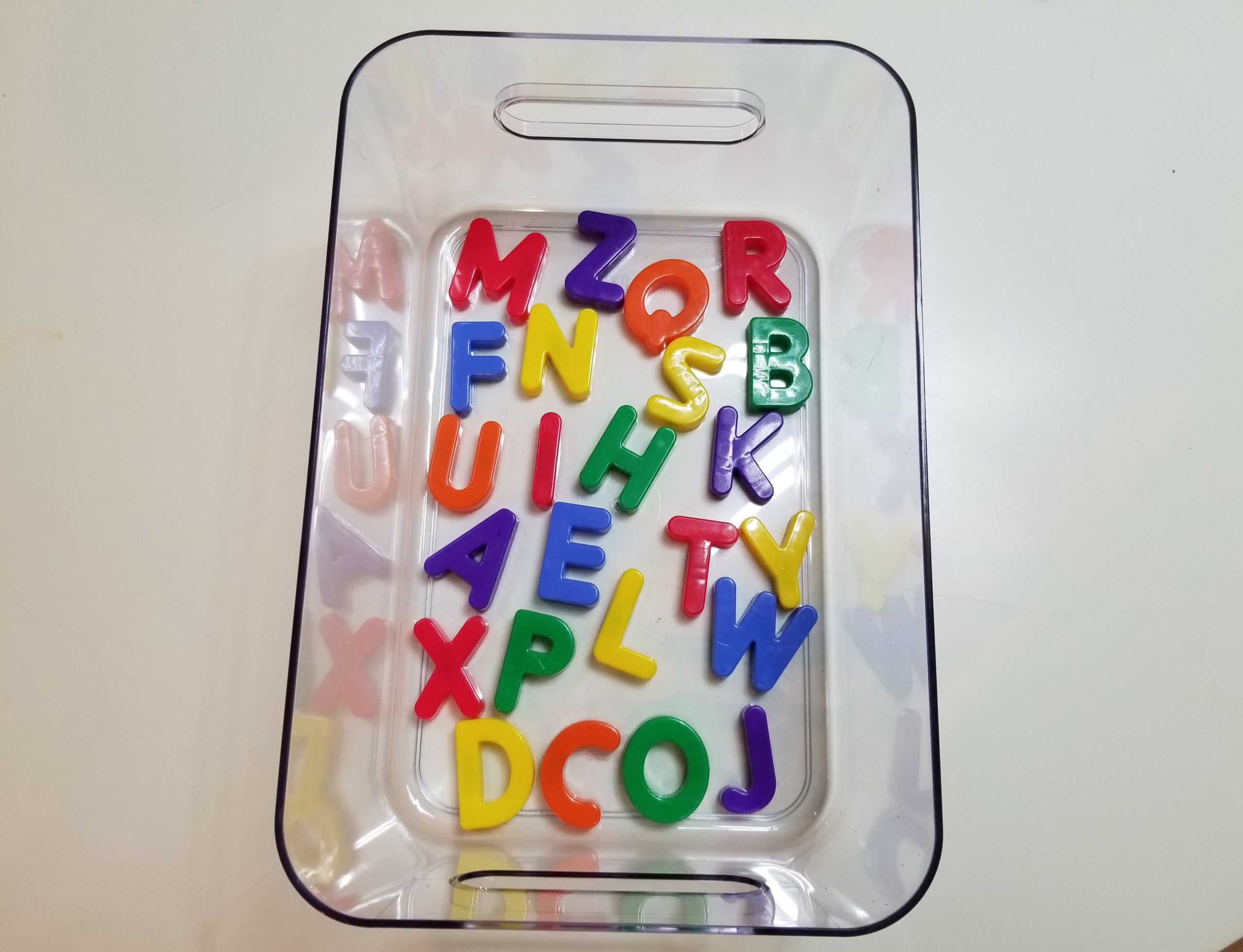
Step 2: Tie a string around one end of the chopstick. This will be your child’s fishing pole! Tip: If you don’t have a chopstick, you can also use a ruler or even a sturdy reusable straw.
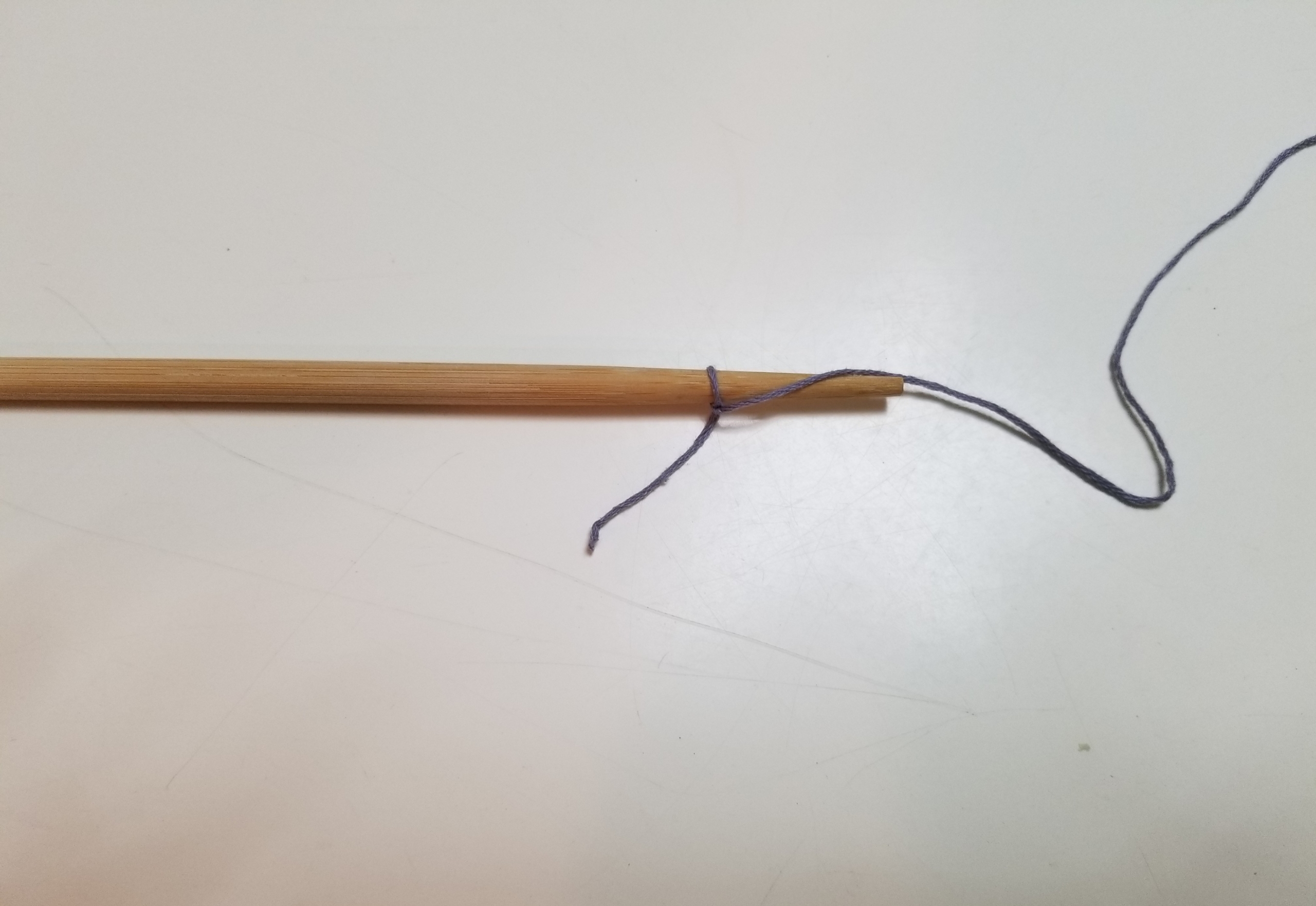
Step 3: Take the other end of the string and tie it around your plain magnet. I like to add a little tape to make sure it’s nice and secure.

Step 4: It’s time to go fishing! Place a stack of ABC flashcards next to your “pond” and have your child draw a card, then fish for that letter. When they snag it, they can flip the card and go after the next letter in the stack. If you don’t have flashcards, you can write your own on a set of index cards or simply call out letters to your child.

Variations: You can also vary the game to teach other early literacy skills. You can use flashcards featuring lowercase letters and have your child fish for its uppercase buddy. You can also skip the flashcards and make the sound of a letter. Then your child fishes for the letter that makes that sound. You can have them fish for the letters to spell their name, or any word they want to learn. The list of possible variations goes on and on.
The important thing to remember is this—if your child is having fun, they’re learning!
How are you infusing play into your child’s learning?
One of the best ways to engage children in reading is to share books about topics they’re interested in. When kids are excited to cheer on their favorite players or love to play sports themselves, books by and about athletes are ideal to capture their attention.
Like all sports, baseball offers countless life lessons about teamwork, discipline, perseverance, and having fun. Plus, its history will spark important conversations with your kids about racism and equity in sports. There’s no need to wait for Opening Day to read up on baseball’s heroes and legendary moments. We’ve curated 20 picture books that are sure to score a home run for the little baseball fans in your life all year long.
Read more: If your kids are inspired by reading about athletes, try our list of books by and about Olympians for more fun reads.
What are your favorite sports reads for kids?
By Sheila Dickinson
As a children’s librarian putting together story times for young kids, I reinforce language skills and learning by singing songs with my young audience, talking with them, playing together, writing, and of course reading with them. My colleagues and I love to share books, music, musical instruments, chalk for sidewalks, coloring pages, puppets, flannel boards, and toys at the library.
Bringing your child to story time at your local library is a fantastic way to connect, have fun together, and help your child develop. But your home is also already full of pre-literacy and early literacy tools. And you may know some tricks to engage with your kids that you didn’t realize were pre-literacy activities! This post will share some tips for bringing the library experience home and keeping the learning (and fun) going.
You already have the makings of your own DIY literacy toolkit at home (whether you know it or not), ready to draw on anytime to encourage and support your early learner. You just have to use it. Here are the crucial tools in your kit, plus advice and inspiration for putting them to use:
Your mouth. Talking with your child will help them learn oral language and the give and take of conversation. Even babbling with you is conversation. Use costume props to tell them a story. Make funny noises. Wear a fake moustache and a silly hat.
Learn more: Follow these links to read more about the brain-building power of talk and parental responsiveness, as well as the importance of conversational turns for young kids.
Your voice. Singing develops language skills by slowing down language so kids can hear the different sounds of words. Singing also helps them learn new words and get new information. Basic musical instruments can also help with these skills: a shaker egg, a rattle, a toy drum, a toy whistle. Shake or whistle along to your songs!
Tip: It’s super easy to make your own shaker egg.
Books. Reading together develops vocabulary and comprehension. Reading together nurtures a love of reading and motivates children to want to learn to read. Board books for kids under three years old are so beautiful these days, rich in color and fun!
Discover: See How to Maximize the Benefits of Reading Aloud to Your Kids for simple tips that will help you and your child get the most out of your shared story time. Then check out our curated lists of picture books for various themes and holidays.
Chalk, crayons, markers, pencils, paint. Writing with kids and pointing out words in their daily lives makes them aware that printed letters stand for spoken words. When you write, point out the letters and words you’re using, so they connect the symbols with the sounds they hear. As they’re ready, help them write, or let them invent their own spellings as they learn the sounds of letters and how they form words.
Get inspired: Look through these fun literacy activities to find lots of fun and simple games and activities that incorporate writing.
Toys and imagination. Playing is one of the ways kids learn language and develop literacy skills. Acting stories out helps to put thoughts into words and helps kids describe what they are doing. Maybe you have a stuffed animal octopus and can act out the “slippery fish” song where the octopus gets eaten by a shark? Maybe you have some dinosaurs that ride boats in the rain puddles? Why are they on boats? Ask that kid; find out why.
Related: Discover how storytelling can help you build joy, connection, and (yes) literacy with young kids with these fun DIY storytelling crafts.
Librarians and libraries are your enthusiastic supporters as you journey toward raising a voracious reader. Parents are a kid’s first and best teacher, and reading begins at birth, or before! We librarians want to support you to make sure your family will use the library your whole lives. So raise your voice and talk, sing, read, draw, write, and play your way to raising a lifelong reader.
Want to find more inspiration for your DIY literacy toolkit? Follow Maya Smart on Pinterest or Facebook for tips, tutorials, and tools to raise your reader the fun way.
As summer begins to wind down, all I can think is, “I want s’more!” S’more fun, s’more sunshine, s’more time by a campfire, and definitely s’more of the delectable dessert of the season itself. In that spirit, and to keep up the summer learning, we’re going to create a fun s’mores spelling game that teaches tricky consonant blends. This activity will evoke the fun of toasting marshmallows, but with a lot less gooey mess. (Or for an extra-gooey edible option, see the end of the post!)
This activity helps children with spelling, specifically when working with words that have consonant blends. A consonant blend is when two consonants are next to each other in a word, such as in the word flip. When children begin to spell these words, it’s often hard for them to hear the second consonant in the blend. Building these words into “s’mores” in this spelling game helps kids slow down the word and listen for each letter. This reinforces what we call phonemic awareness (a super important early literacy skill), as well as teaching how to spell new words!
Materials:
- Cardboard
- White paper
- Dark brown paper
- Markers
- Scissors
- S is for S’mores by Helen Foster James, or another camping-themed book (optional)
Cost: Free, if you have these simple supplies at home! If you need construction paper, it will be around $7.
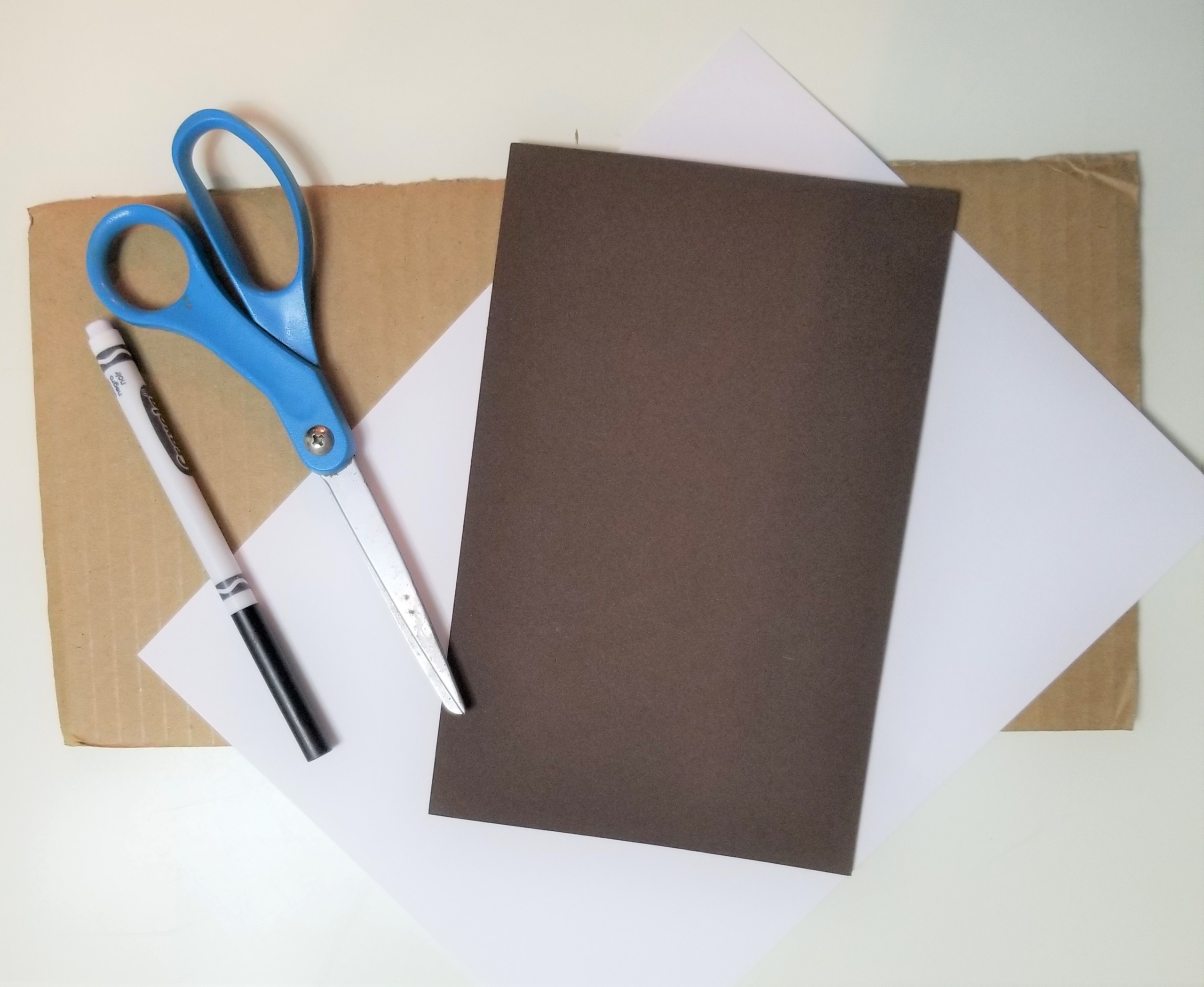
Step 1: Prepare a list of five words that start with consonant blends that you’ll be helping your child spell during the activity. Some great choices are trip, plug, frog, crab, and drum.
Alternatively, you can also adapt this activity to work for words that end with consonant blends, such as belt, tilt or band, or words that end in double letters, such as pass or buzz.
Step 2: Cut the cardboard into 10 squares. These will be your graham crackers.
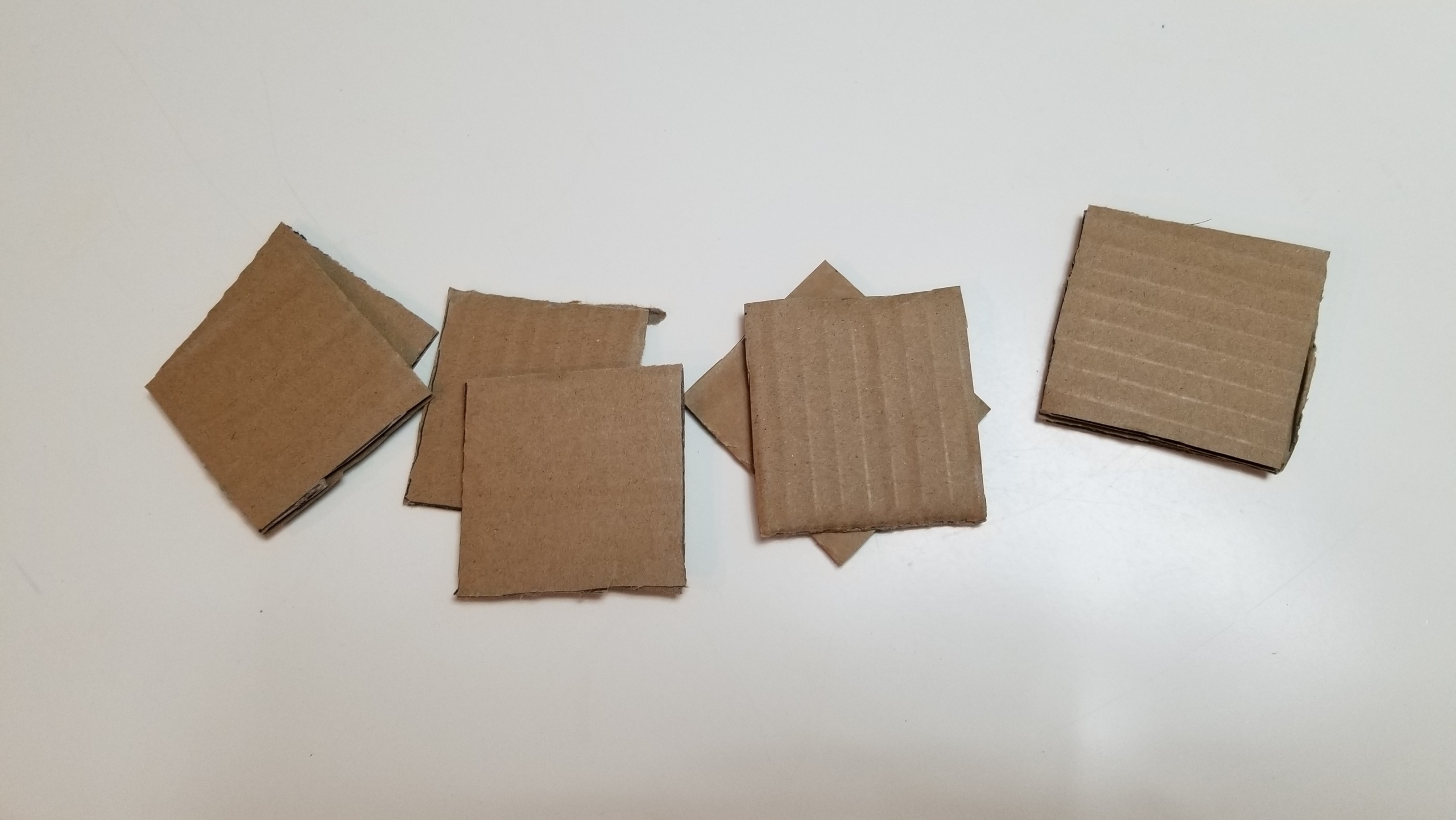
Step 3: On your cardboard graham crackers, write the consonants that begin or end your target words. Remember: Graham crackers start and finish a s’more! This is a good time to refer to your list in order to keep your letters organized. For example, if you choose the word frog, make sure to write F on one square and G on another.
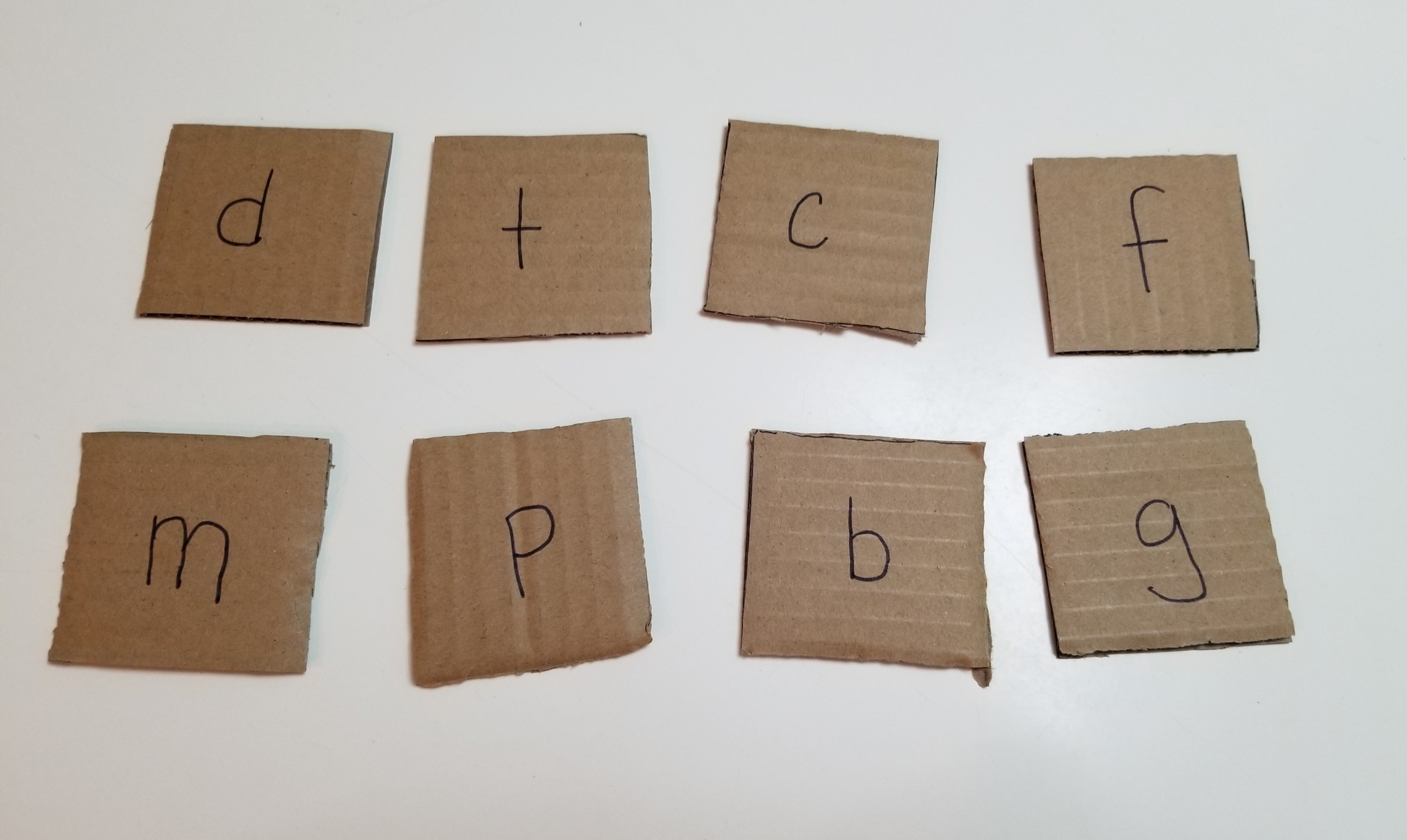
Step 4: Cut the dark brown paper into five squares that are approximately the same size as the cardboard. This is your chocolate.
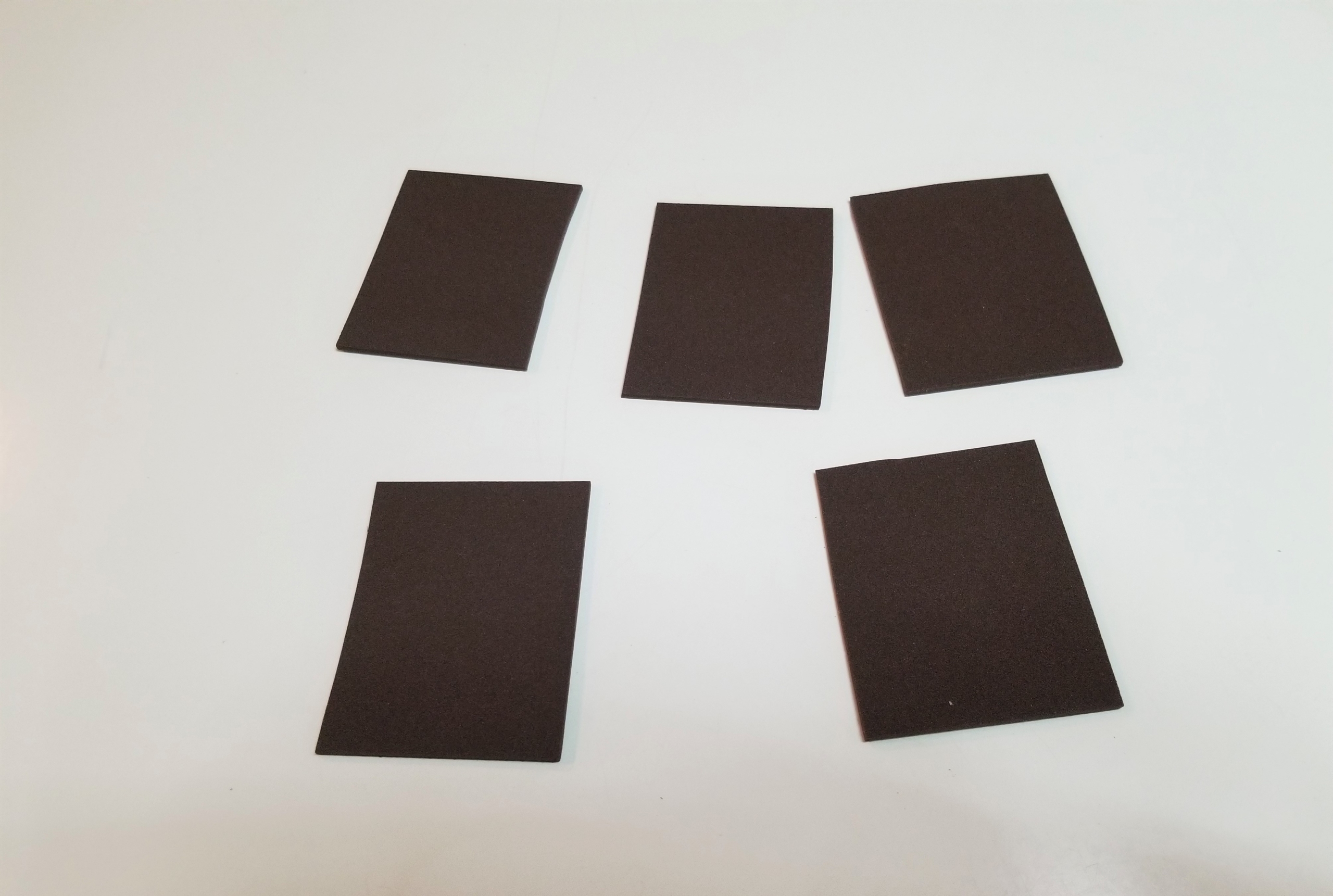
Step 5: On your “chocolate” squares, write down the consonants that are the second letters of your words. (Or the second-to-last, if you opt to use words with consonant blends at the end.) For example, if you choose the word frog, you’ll need one piece of “chocolate” with the letter R on it. If you use the word belt, you’ll need an L.
Note: You will probably have multiples of the same letter, because certain consonants like L and R are very common in blends. That’s totally fine!
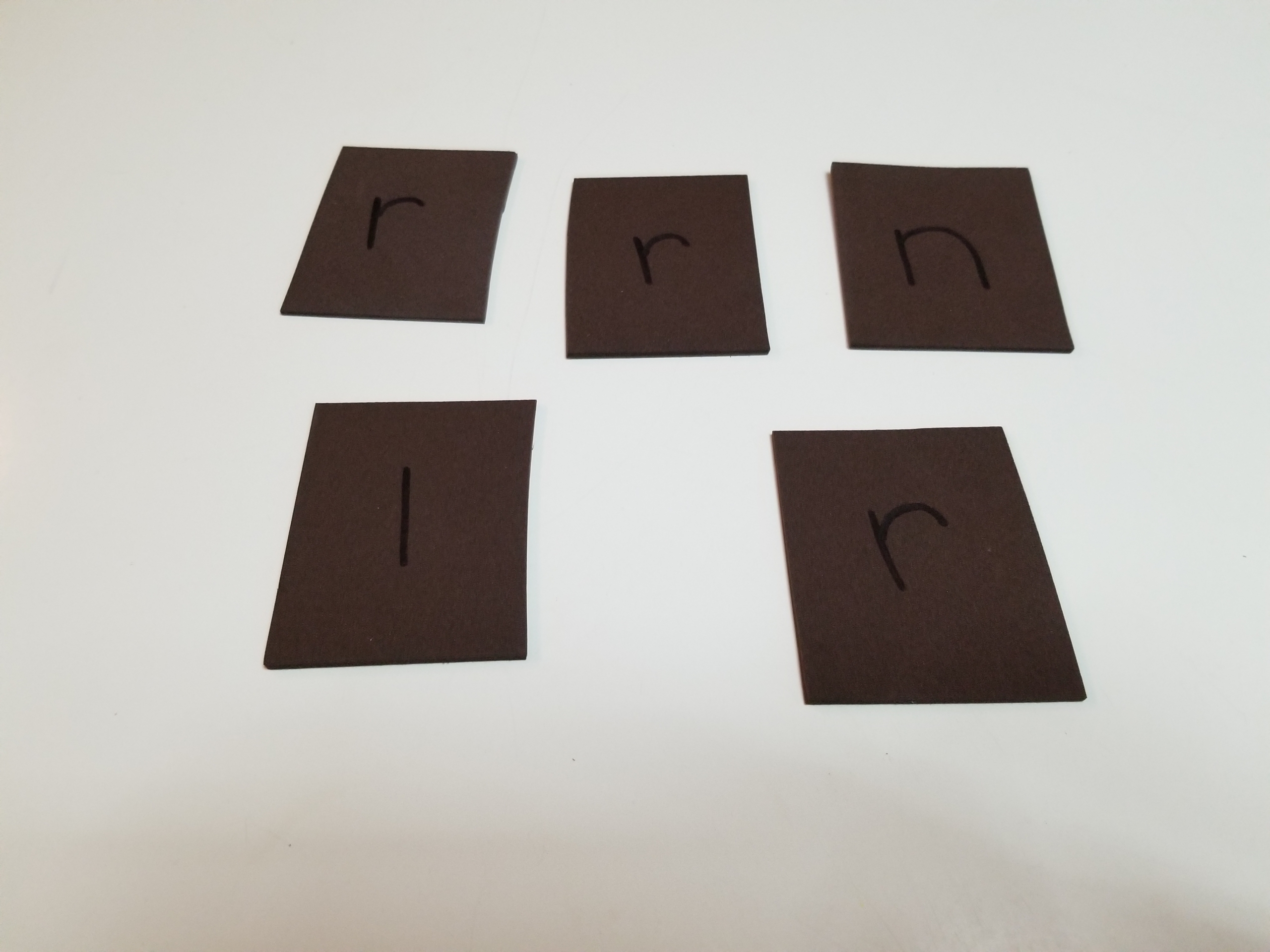
Step 6: Cut the white paper into five rounded squares that will fit on your pieces of “chocolate.” These are your marshmallows! On them, write the vowels needed to create your words.
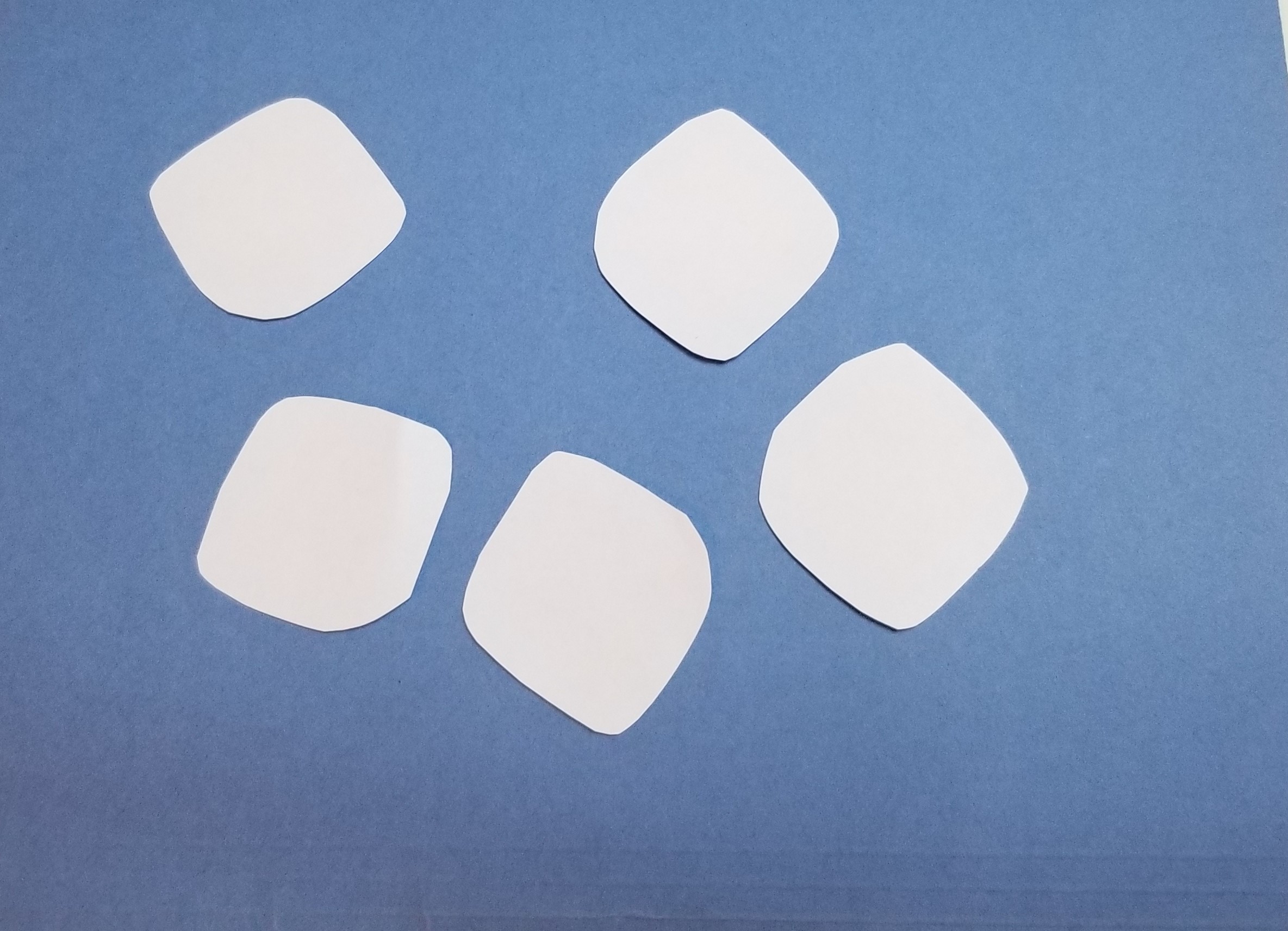
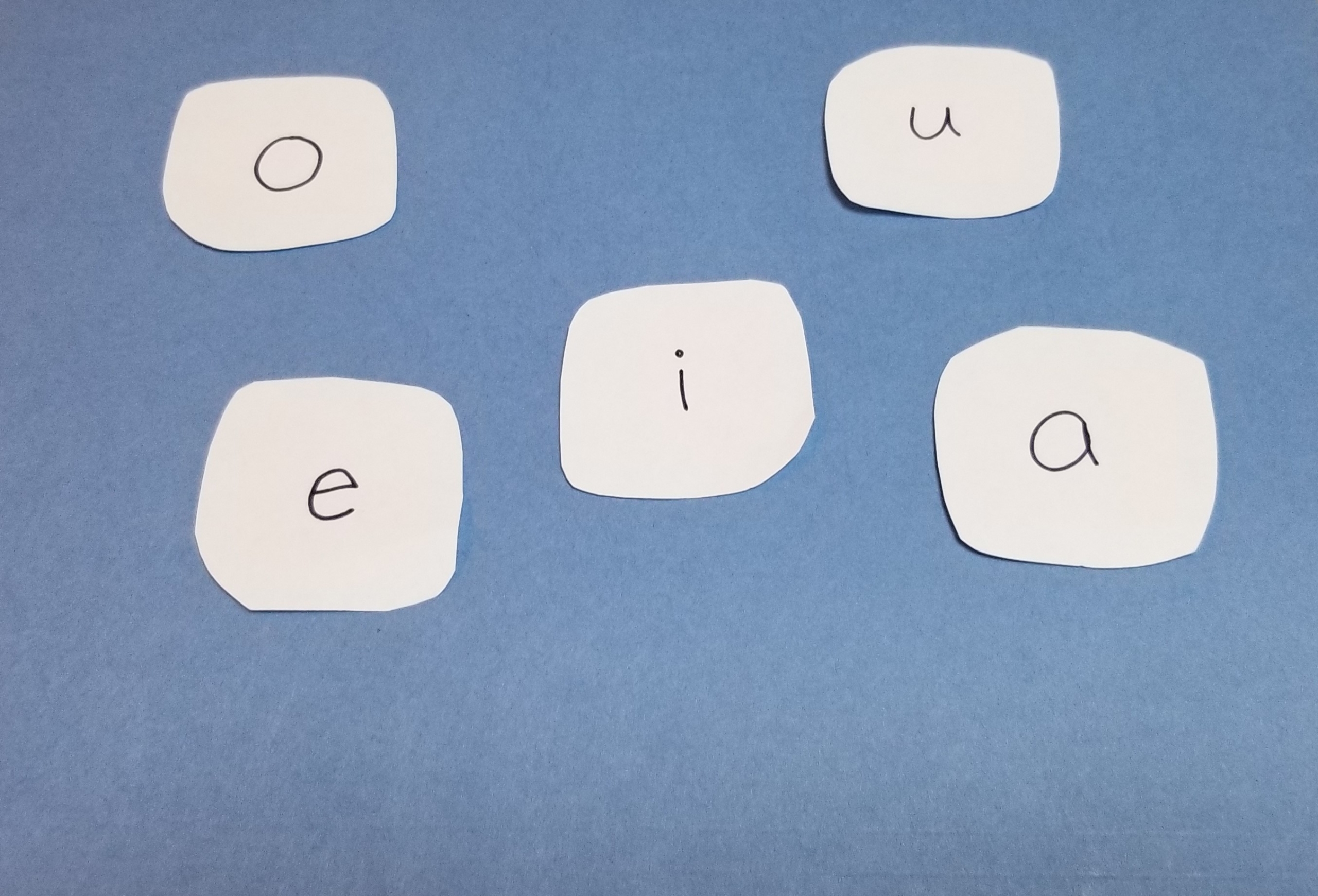
Step 7: Time to play! Call out one of the words from your list. Your child will need to grab all of the correct s’more ingredients to spell the right word. If they’re having trouble, help them out—this can absolutely be a team game. Once they’ve spelled the word correctly, they can go ahead and spell s’more words!
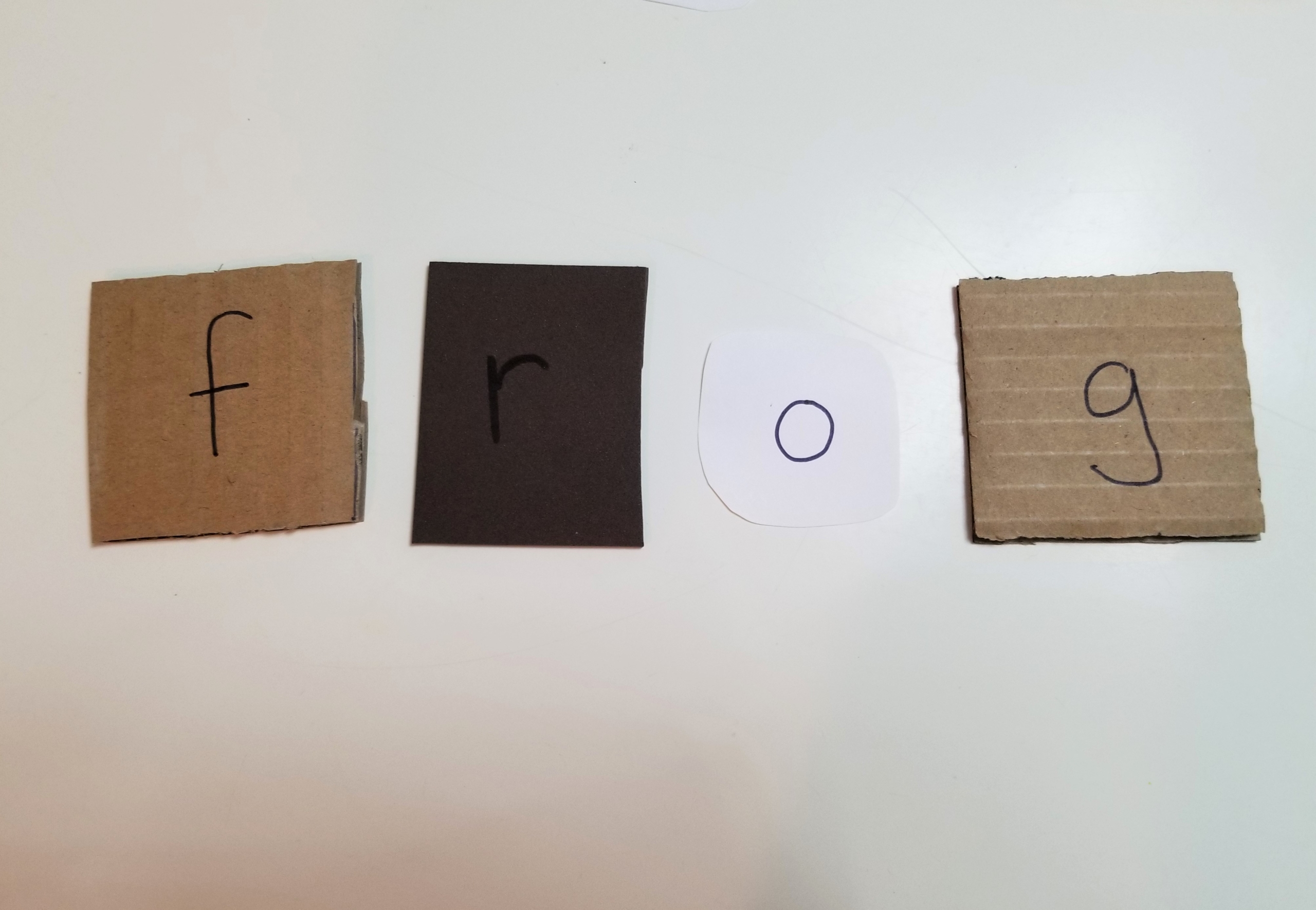
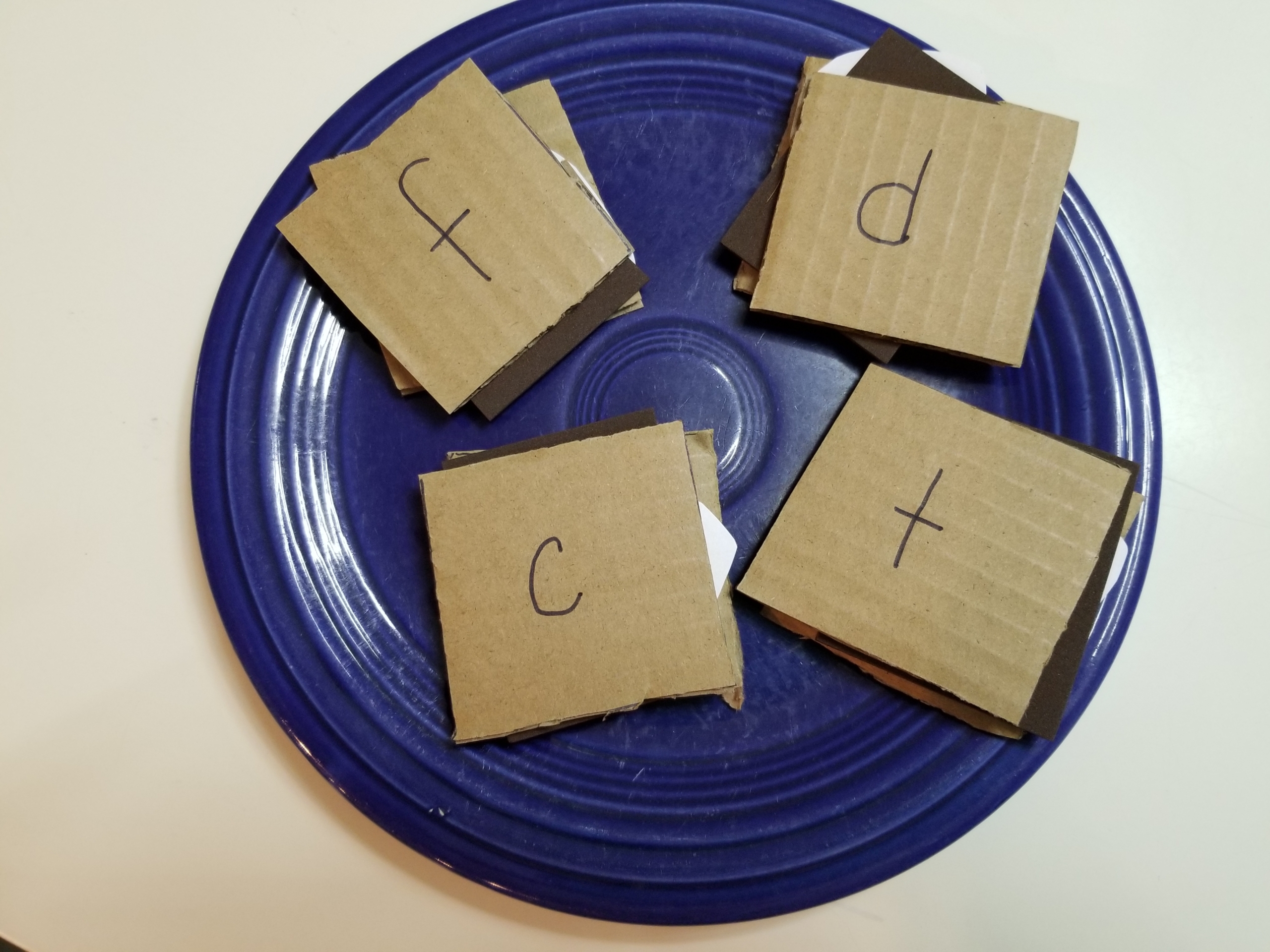
Adaptation for older children: If your child is a more advanced speller, you can simply let them play around with the ingredients and discover for themselves the words they can build into s’mores.
Edible option: When you’re done, you might just enjoy a real-life s’more to finish off your faux-camping fun! Or you could really go all-out and do this consonant blends spelling game with real s’more ingredients, by writing your letters on graham crackers, chocolate pieces, and marshmallows using icing. If you do, be sure to share pictures on social media and tag us!
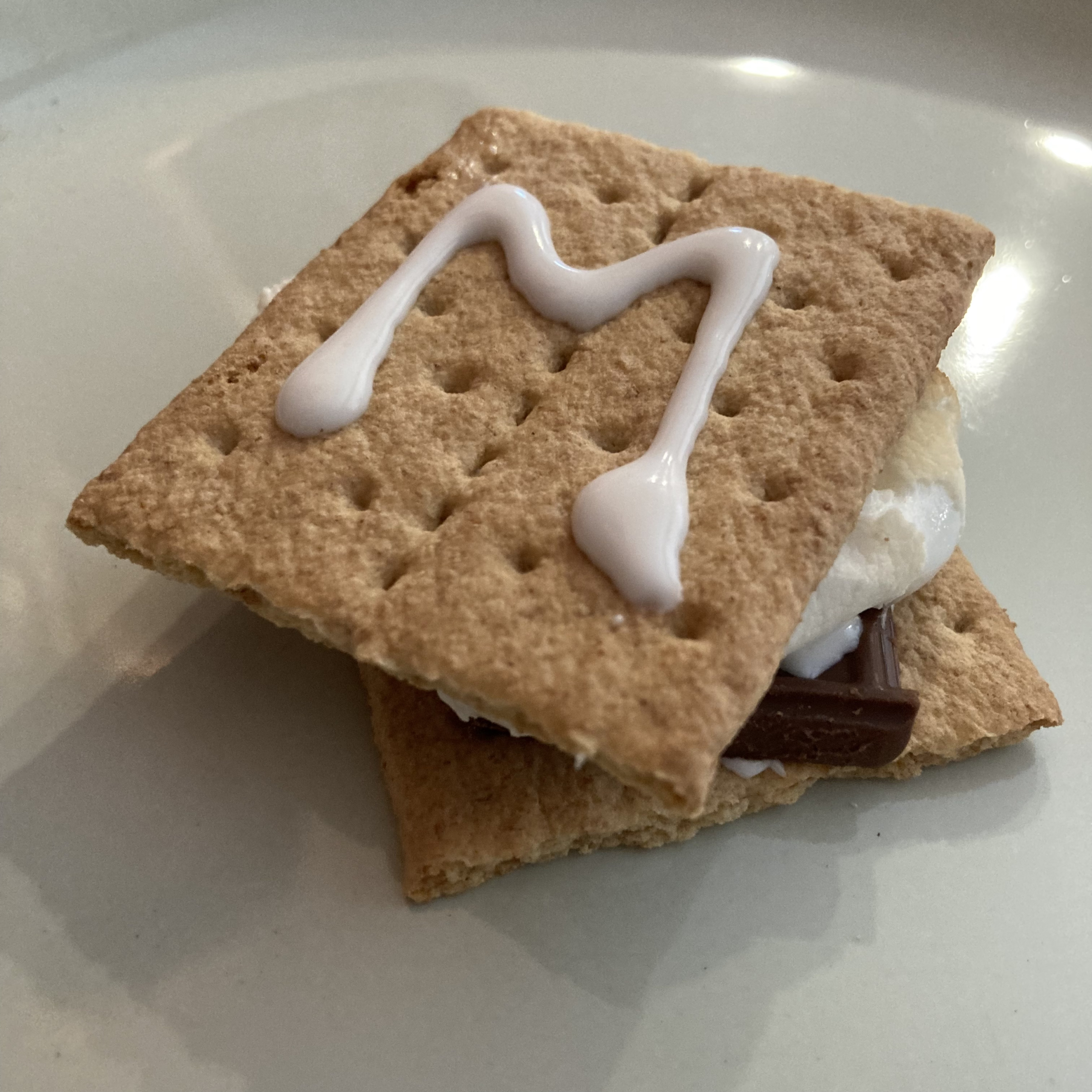
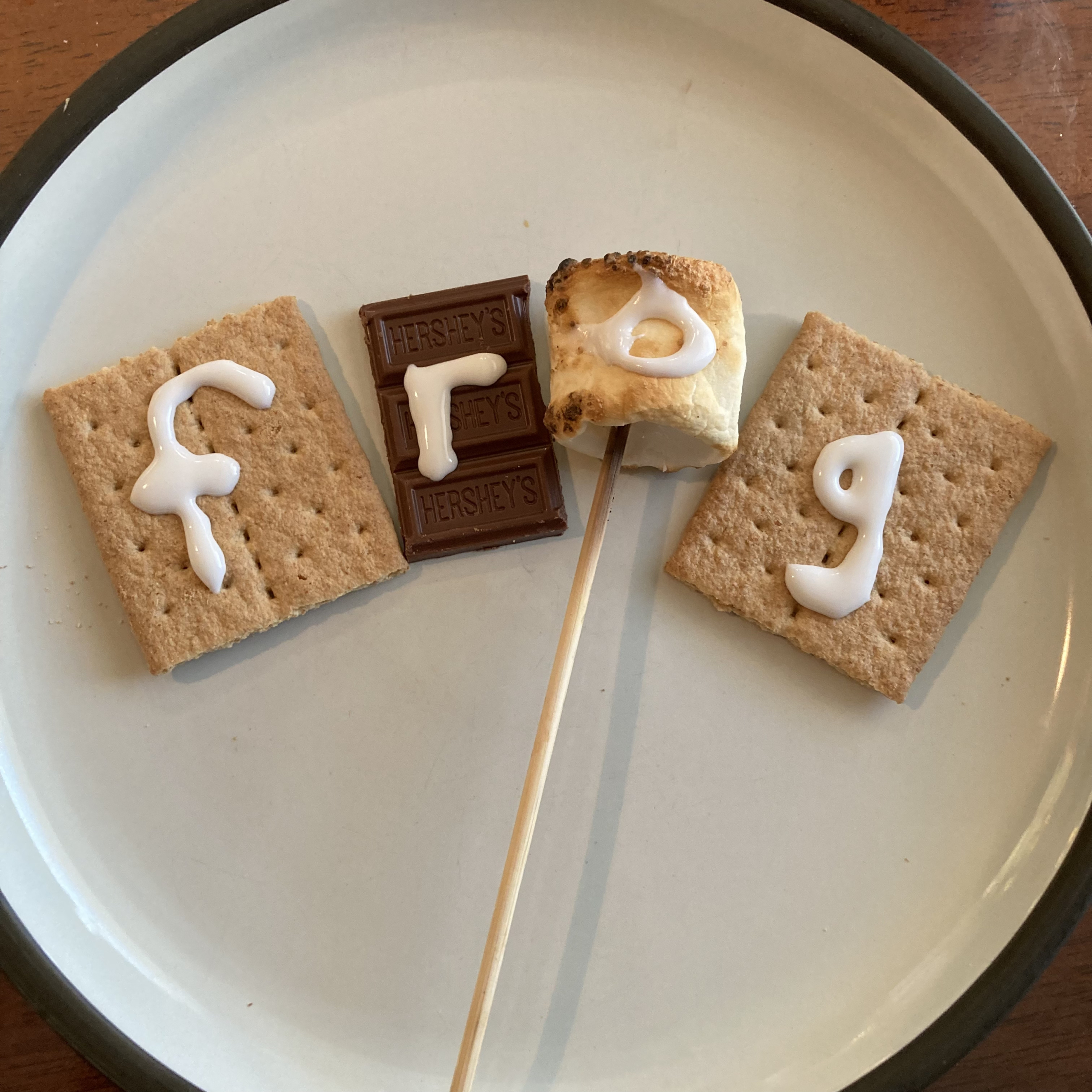
Book Pairing: We love to combine literacy activities with a relevant read-aloud. Pair your s’mores spelling activity with a picture book to get in the camping spirit. Some of my favorites are S is for S’mores, CeCe Loves Science and Adventure, and Curious George Goes Camping. You could even set up a tent or a nest of sleeping bags to read in, or read by a pretend fire outside, if you really want to set the mood! As you read, point out any words you encounter that have consonant blends, and help your child sound them out.
Looking for more fun games to teach reading, writing, and spelling? Check out our other literacy activities.
By Laila Weir
What?! Use fashion to teach early reading skills? Well, yes. When you’re raising little people, buying clothes is something you have to do a lot. Not only do they outgrow things seemingly overnight, but there are also endless stains, tears, and misplacings to contend with. (Buying them adorable clothes also happens to be fun, at least in my book!)
Raising a successful reader is also an important part of the parenting job—as in, critically important. Research shows that childhood literacy is crucial: Students that can read by third grade are less likely to drop out of high school and less vulnerable to poverty and unemployment later on. Conversely, around 70 percent of U.S. prison inmates operate at the lowest literacy level. Yet, before COVID-19, a national evaluation showed that two-thirds of U.S. 4th and 8th graders weren’t proficient readers. So, parents, it’s up to us to help kids get where they need to be.
In the earliest years, learning the concept that language can be expressed through symbols on paper (or fabric!) is key, along with mastering the ABCs—which takes time and practice. Next up is getting familiar with lots of high-frequency words, and comfortable sounding out simple words—which also takes time and practice. Often, the best way to impart these skills in real, busy life with real, impatient kids is to weave them into other daily activities.
And so we got to thinking. What if we could combine these two foundational and yet seemingly unrelated parts of parenting? And it turns out the answer is a fun, low-stress way to build early reading into your and your kids’ busy days. The key is to look for chances to reinforce letter learning and reading skills while shopping for and dressing your child. (Tip: This works with anything! Words on a cereal box? Letters on traffic signs? Point them out!)
Here are some tips for using fashion to foster phonics (sorry, we couldn’t resist!):
Look for Easy-to-Read Writing
Kids’ T-shirts and other clothing often feature cute phrases, slogans, and even brand names all over them. Look for items that use a font kids can read, not curlicue script. This alone will open up the opportunity to show letters to your child, whether or not the words are anything they’re near ready to master.
Point out the letters to your child, tell them what each is and what sound it makes. Then discuss how the letter is formed—like, “See how you draw a curve to make a C?” or “Look! A line down and a line across makes a T.”—and trace it with your finger. Help your child trace it with their finger, too. Just remember this is best done before they put on the clothes, or when they take them off. Showing them in the mirror won’t have the same effect!
Seek Out Easy Words and Phrases
When possible, also opt for clothing with simple words on it. Even better, scoop up any items with a whole phrase that your child could learn to read. But if that’s not readily available (or it’s not cute, comfy, or quality), look for something that has a few words your child can sound out, or a few high-frequency words your child could start getting familiar with.
Lots of T-shirts and sweatshirts have the words and or the on them, as well as other important words to start recognizing. Some brand names and slogans are also great for beginning readers. (Think: Just do it.)
Then point out the words to your child. Meet them where they are: If they’re just mastering letter sounds, remind them what sounds the letters in question make, and then demonstrate sounding out the words. If they’re a little further along, let them try for themselves, but give them plenty of support and encouragement.
You can read to them any words they can’t read for themselves, tracing your finger along under the words as you go. Even the youngest kids will benefit from learning that these combinations of letters represent words they know and that we read words from left to right.
Repeat, Repeat, Repeat
Ok, so this tip isn’t unique to using fashion to teach your child reading skills. It’s fundamental to our whole approach to raising a reader from day one through … well, forever!
If you can forgive the play on words, Rome wasn’t spelled in a day. It takes a whole lot of repetition to help kids master the alphabet, remember letter sounds, commit letter combinations and spelling rules to memory, and internalize the many common words that strong adult readers have memorized. (Let’s just say that if we had a nickel for every time we repeated to what seemed to be deaf ears “Remember, a silent E makes a long vowel,” we’d treat you all to a back-to-school shopping spree.)
So repeat the lessons every time your child wears a readable outfit (or you do!), and stay patient. Even the millionth time your sweet little thing reads “make” as “mack.” They’ll get there—with your help.
Get Clothes You Can Write On
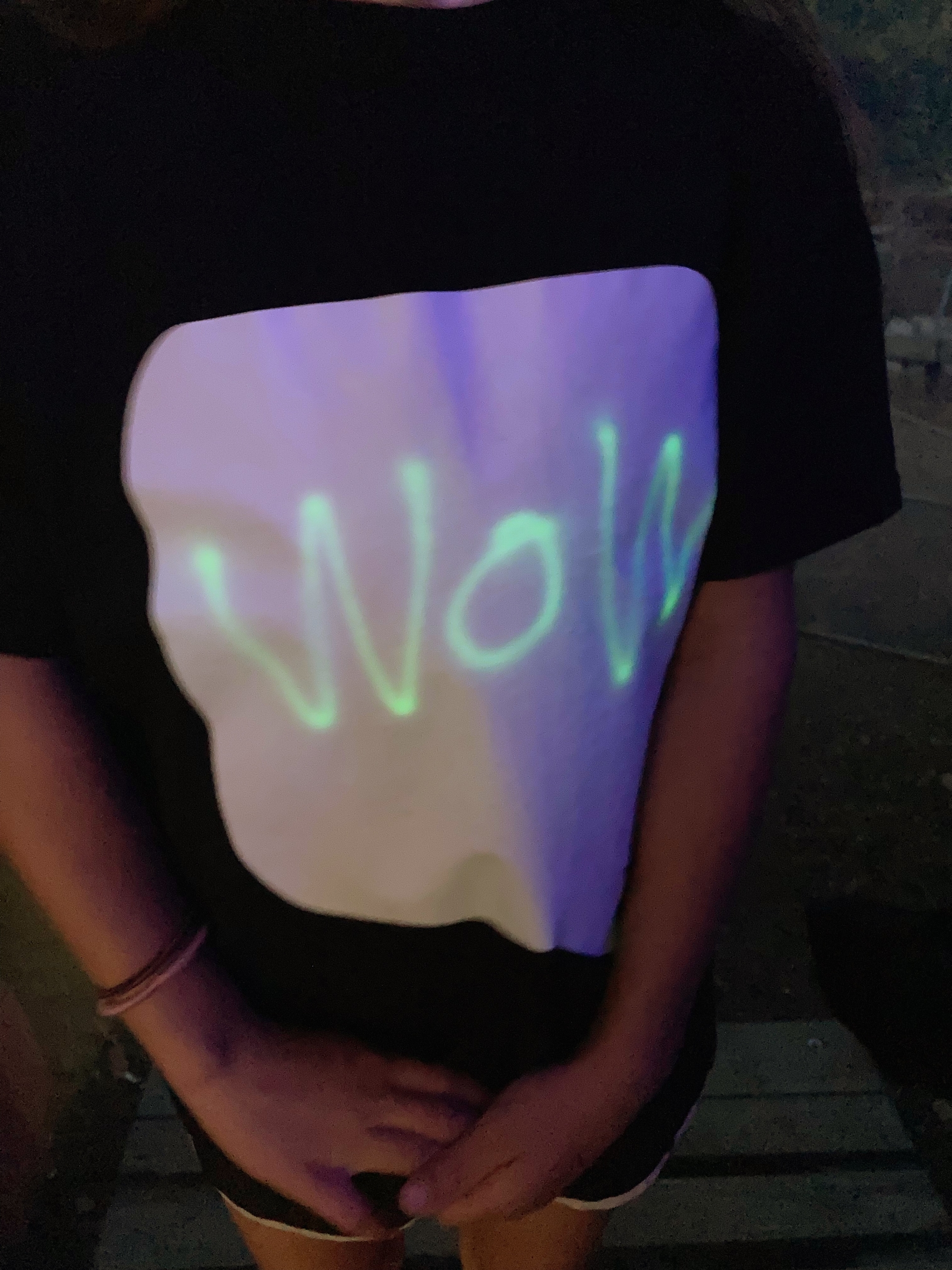
Various small vendors sell T-shirts with a blank patch you can “write” on using a pen light. The writing shows up great in the dark, then fades away, so you can use it over and over. These make a super fun novelty gift that’s sure to keep the wearer and their friends entertained at any sleepover or campout! Just don’t forget to encourage them to practice writing their name, and to learn to write simple messages. Wow! Yes! and Fun! would be perfect, easy places to start.
You can also find “write-on-me” T-shirts with blank spaces or speech bubbles intended for adding a permanent message of your own, which are an easy starter version of our next tip…
Make Your Own
Why not craft your own ABC hats or spelling words T-shirts, too? Craft stores are full of colorful blank clothing items, fabric markers, and fabric paint. If you can’t find just the right fashion for raising your reader, go ahead and make your own!
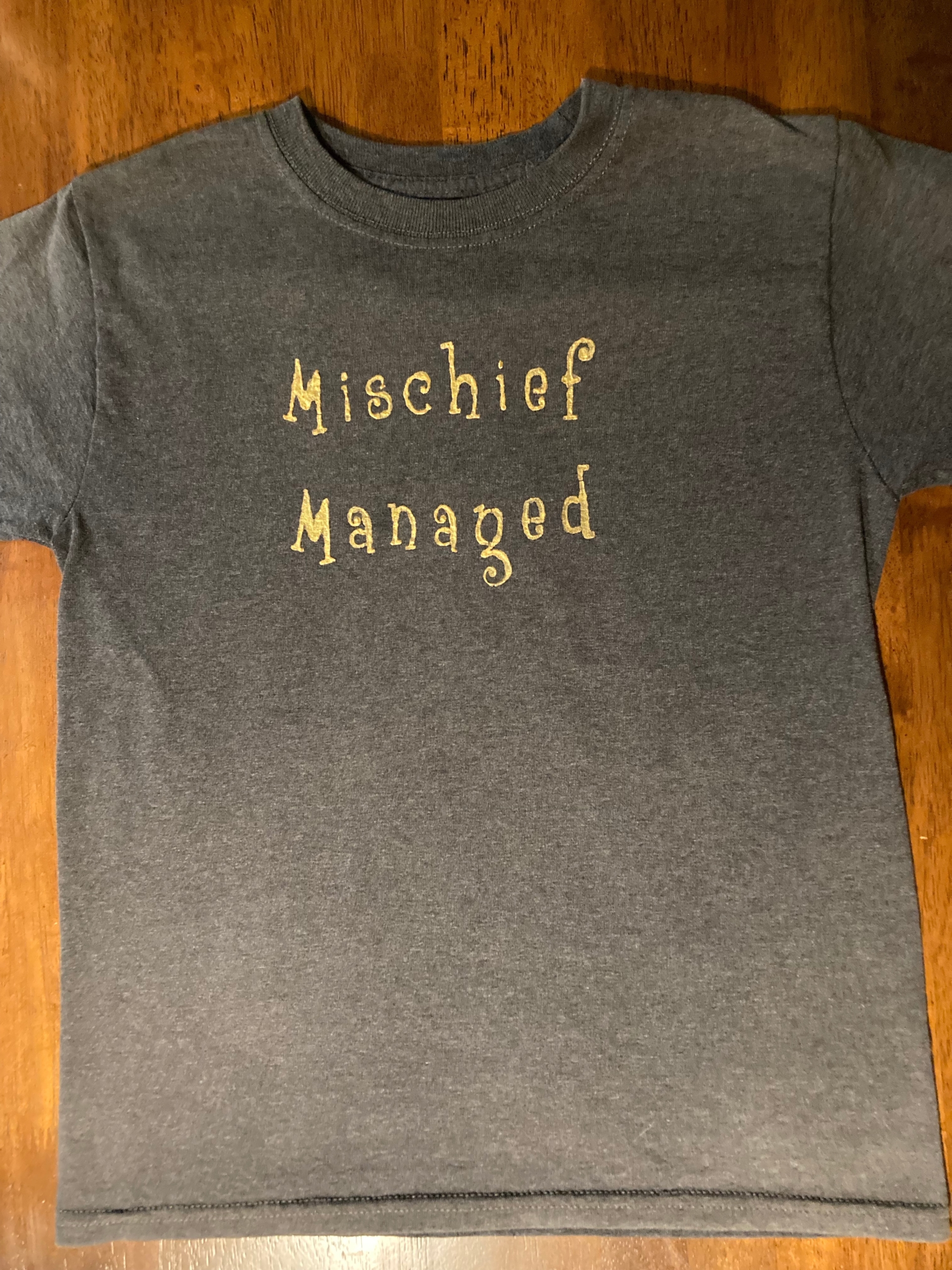
Invite your beginning writer to join in the fun, too. As they get older, you can help them stencil favorite quotes from books onto their creations, like this adorable Harry Potter quote shirt. (Tip: Book-quote T-shirts also make great gifts.)
We hope this post will inspire you to keep reading skills top of mind as you shop for your kids this year.
How else are you weaving reading skills into life with littles? Let us know in the comments, or connect with us on social media!
It happened on a Thursday afternoon. I was watching a friend’s two children for the day: eight-year-old Topher and his five-year-old sister, Elizabeth. Topher was helping me set up lunch on the back porch and Elizabeth had gone inside to get her doll. As Topher and I came back inside to grab juice boxes, I noticed the house had become quiet. Too quiet. The kind of quiet that all parents and teachers know. That kind of quiet can only mean one thing—trouble.
I found Elizabaeth in the bathroom. She stood next to the bathtub, into which she had cracked six eggs and emptied an entire bottle of orange shampoo. My mouth fell open.
“Elizabeth, what happened?” I cried.
“It’s okay Ms. Chrysta,” she replied. “It’s for science. It’s supposed to be messy.”
And you know what? She was right. Science should be an exploration, and children should be passionate to try and build, experiment, and innovate. But rather than ever having to clean raw eggs out of my tub again—and to save you from a similar fate—I’ve curated a list of some of the most awesome Science, Technology, Engineering, and Mathematics (aka STEM) books for young children around.
Whatever piques your child’s interest and stirs their scientific thinking—be it Legos, computer games, outer space, or cracking eggs in a tub—support their STEM learning with a great book. And maybe a mop.
As a parent and educator, I’m always on the lookout for kids’ books that not only entertain but also teach and inspire. Hispanic Heritage Month is a good time to introduce young readers to stories that celebrate the rich culture and history of Hispanic and Latinx communities. The U.S. observes National Hispanic Heritage Month from September 15 to October 15. Seize the moment with this list of Hispanic heritage children’s books for all ages, from board books to YA titles.
Whether through playful adventures, touching family stories, or inspiring journeys, all these stories allow Hispanic and Latinx children to see themselves in the characters and settings, fostering a sense of pride and identity. They also give other children a chance to learn about a wide array of countries and cultures. So head to your local bookstore or library and then curl up with your kids to dive into these vibrant tales filled with heart, humor, and adventure.
Hispanic Heritage Board Books
Picture Books for Hispanic Heritage Month
Hispanic Heritage Young Adult Books for Tweens
There are few better books to teach children about the importance of teamwork, resilience, and discipline than the true-life stories of legendary Olympians. Whether you’re gearing up for two weeks of cheering on your country or basking in the inspiration afterwards, we curated a list of picture books celebrating unforgettable Olympic moments and exploring the history of the Games. Learn about athletes who broke racial barriers, shattered records, and went on to extraordinary lives of service post-retirement. These inspiring picture books will have your little ones dreaming big!
Bonus:


